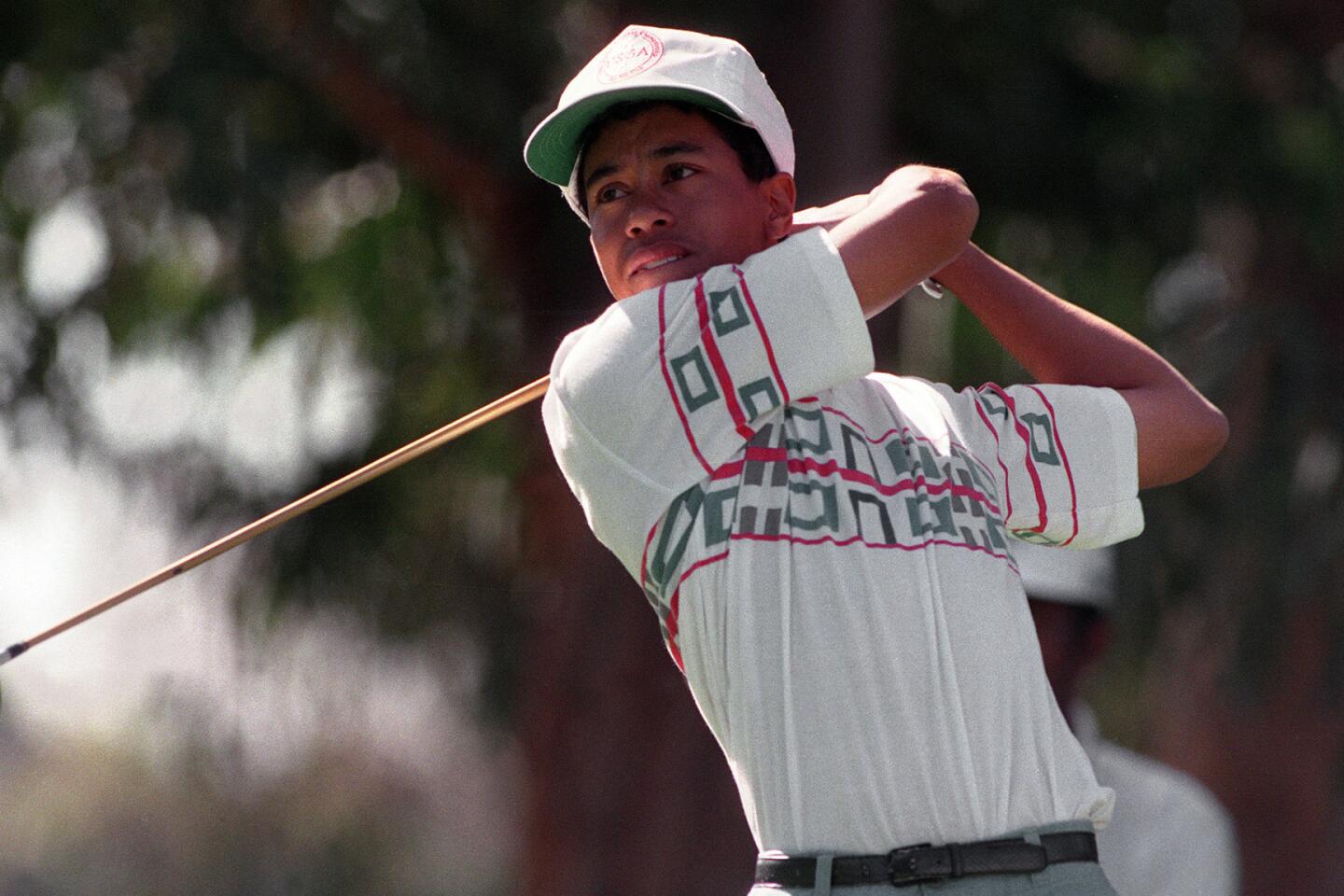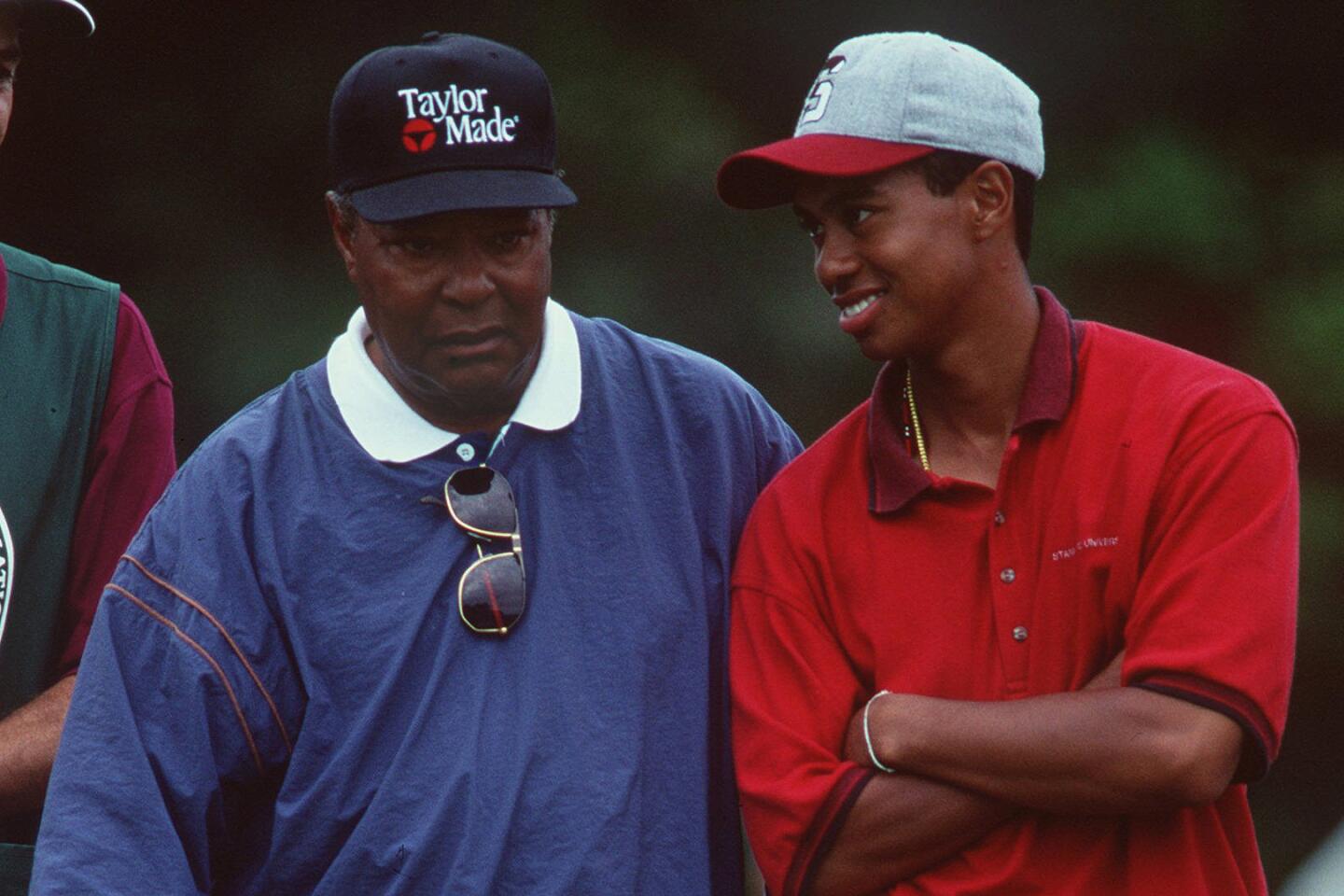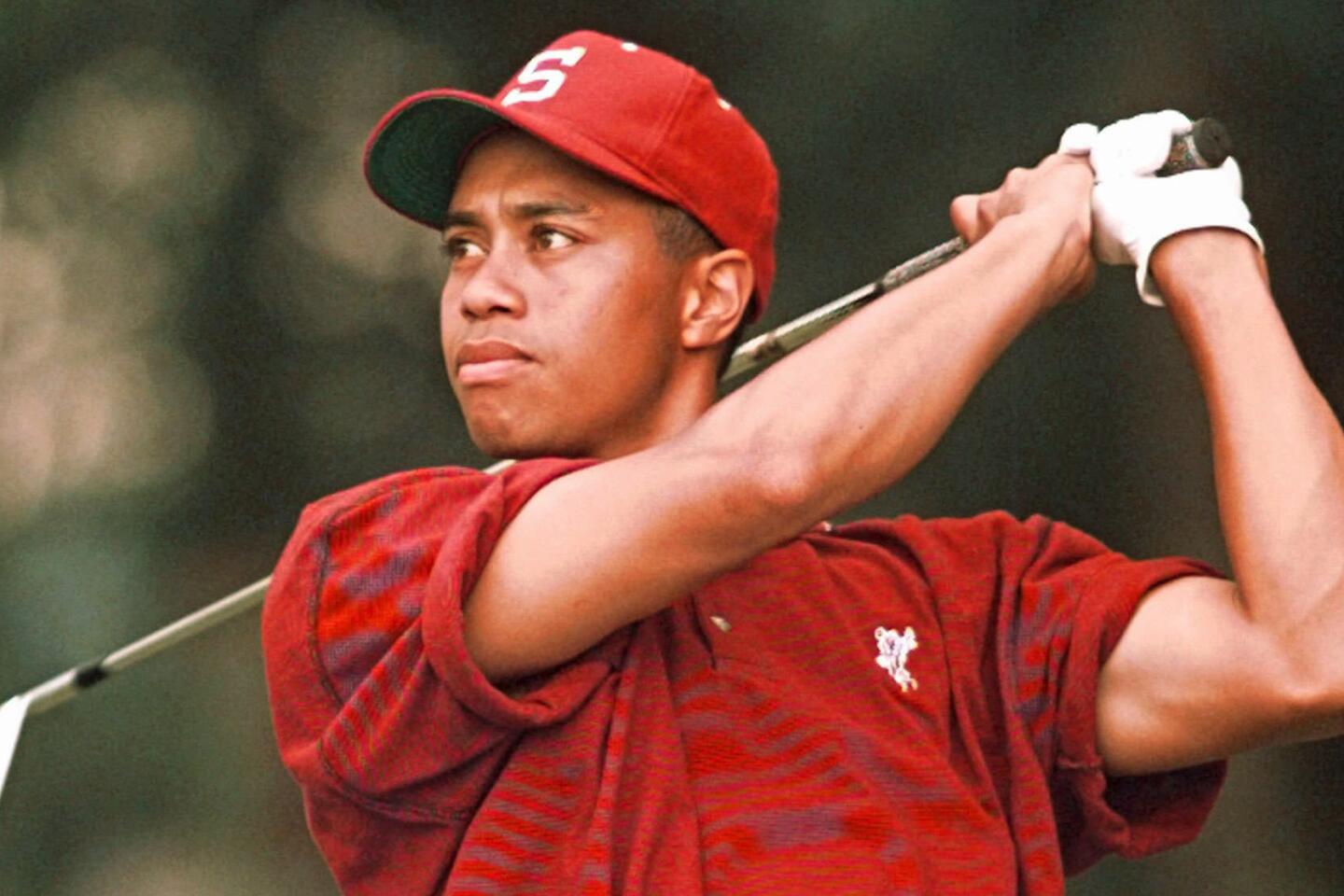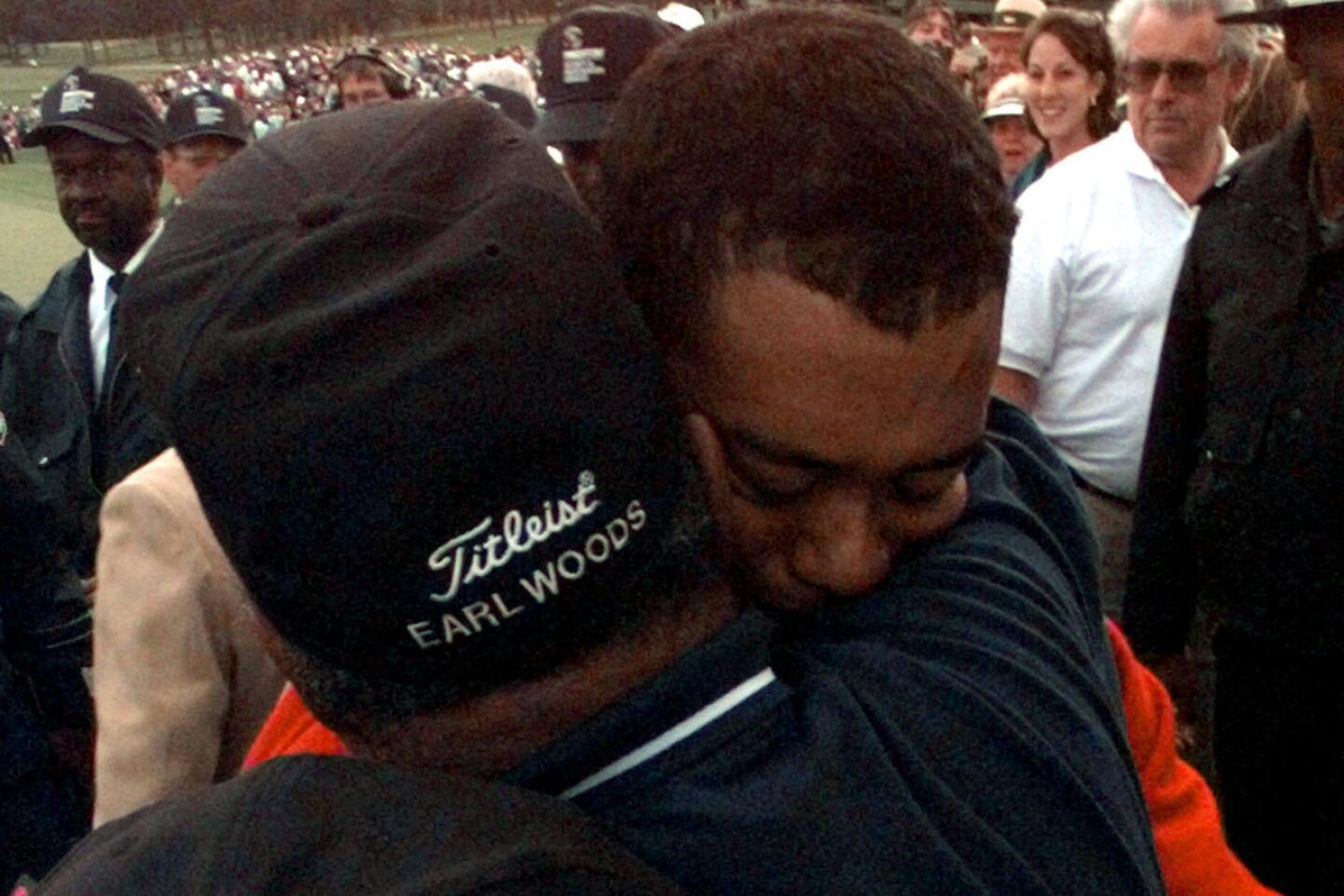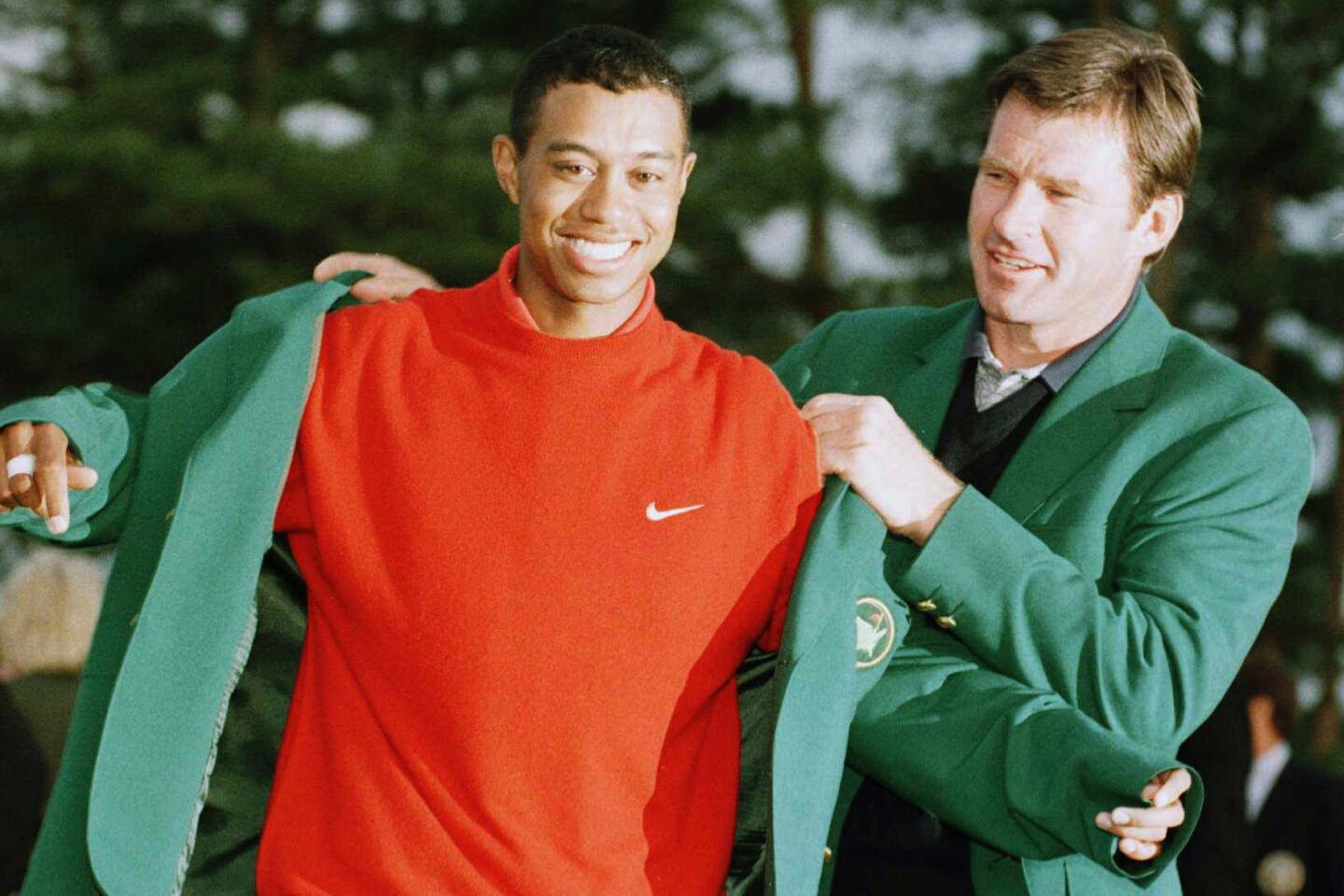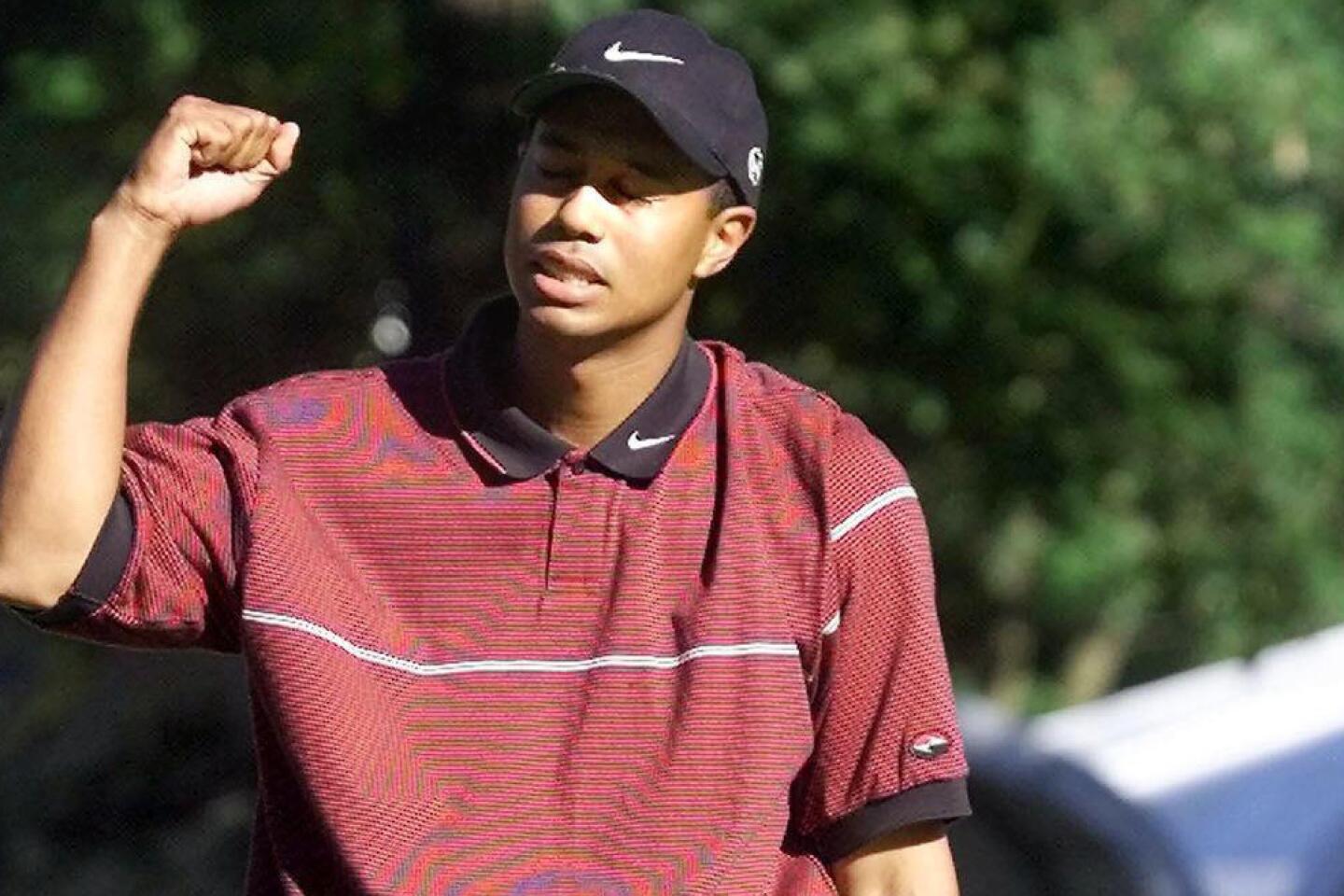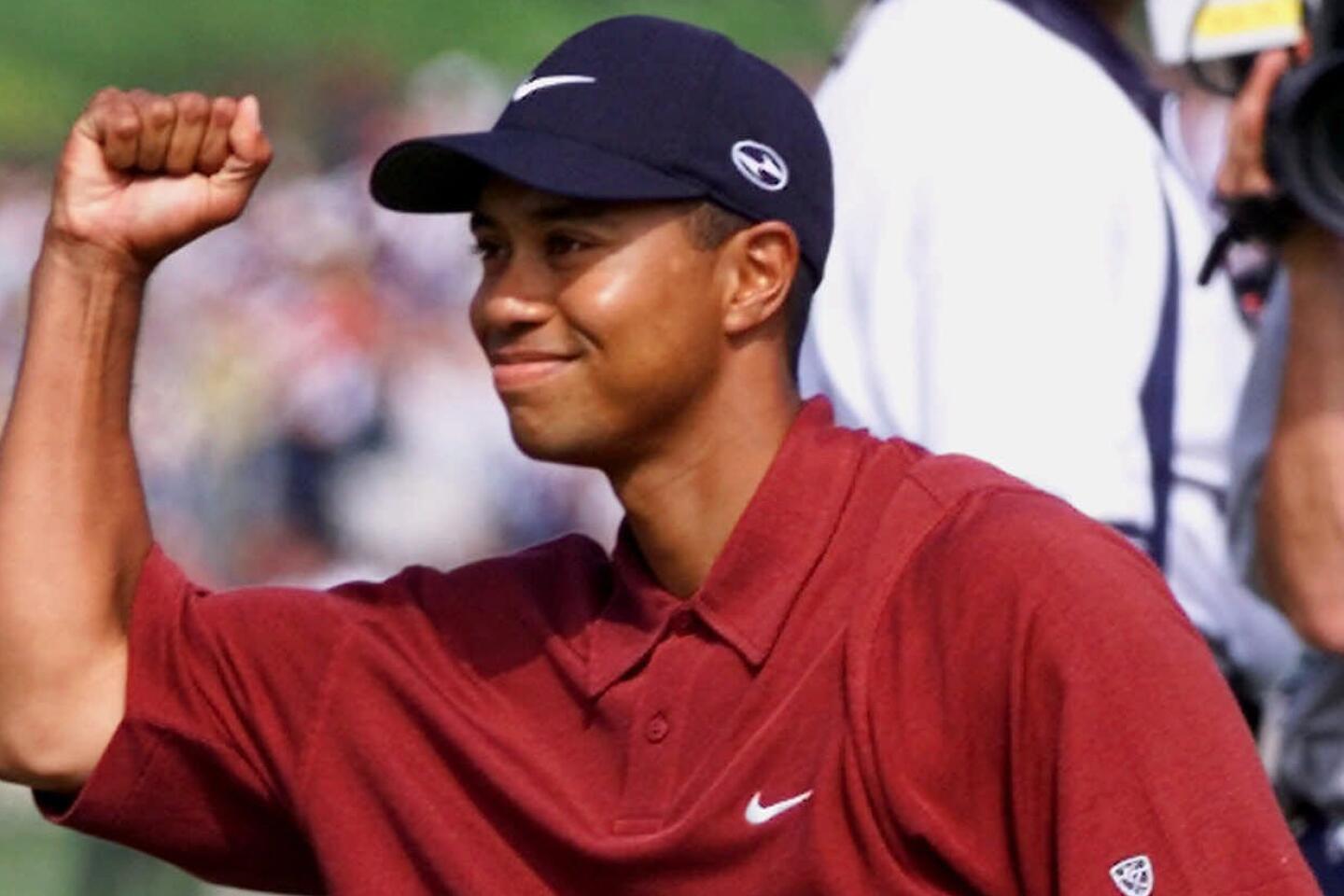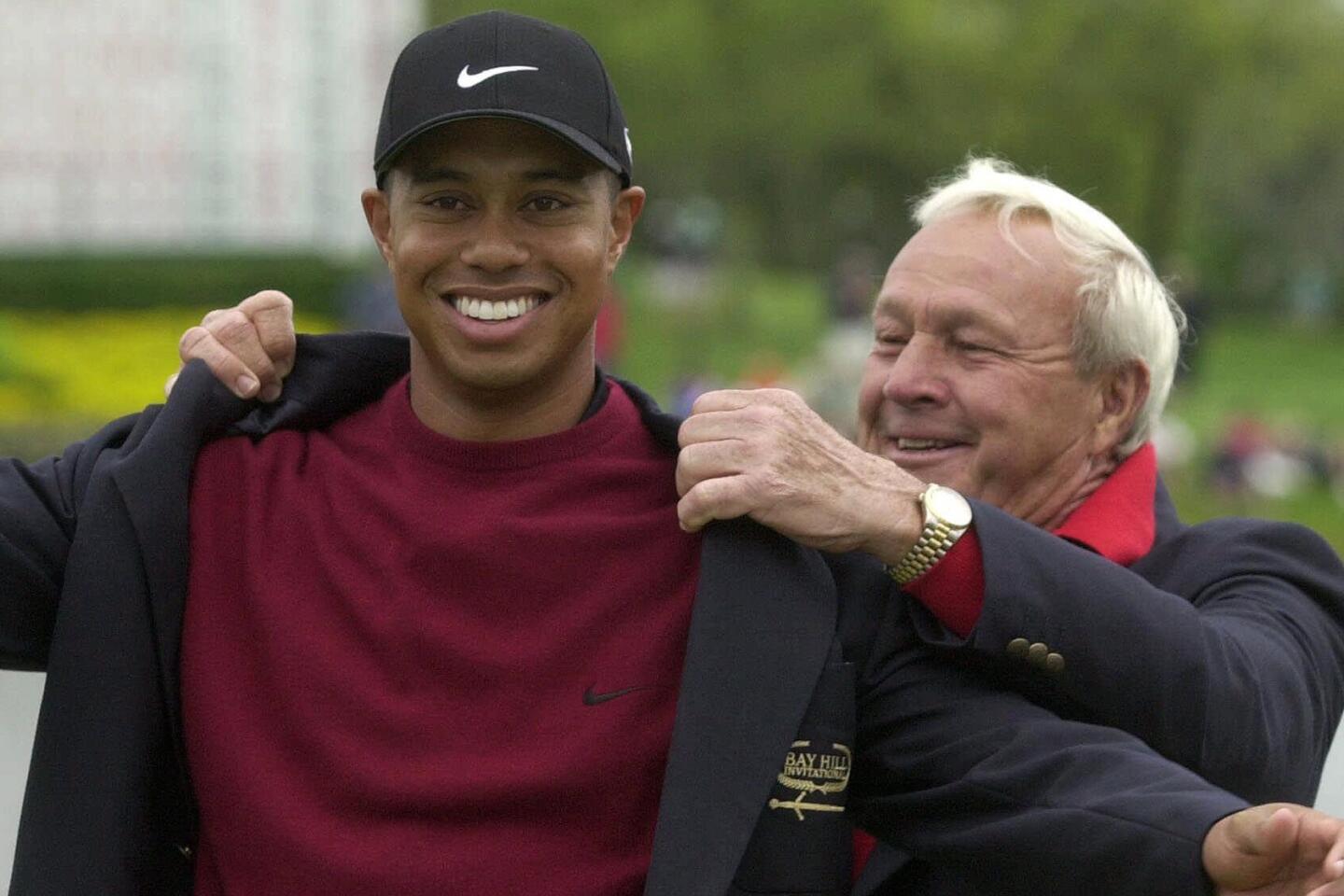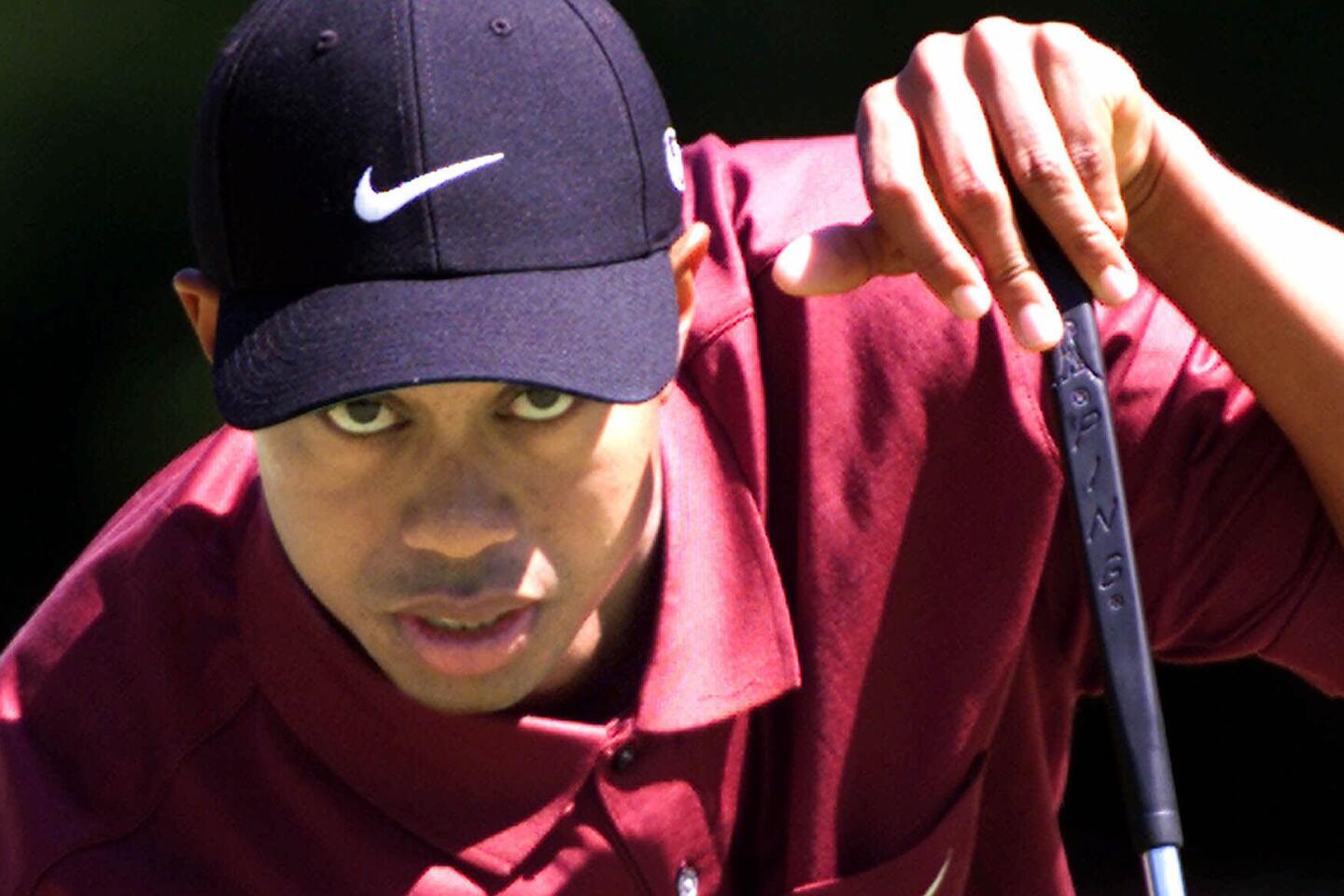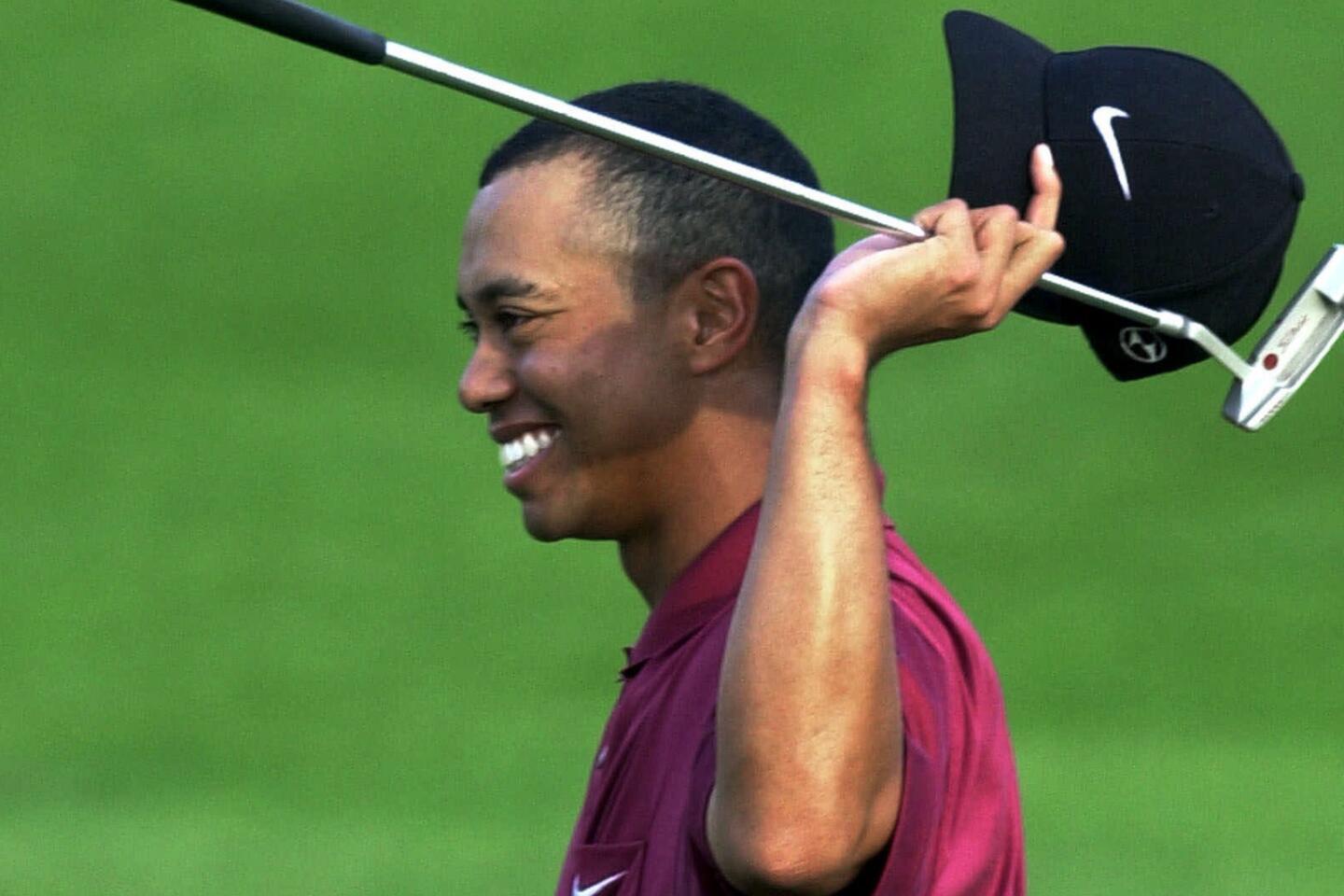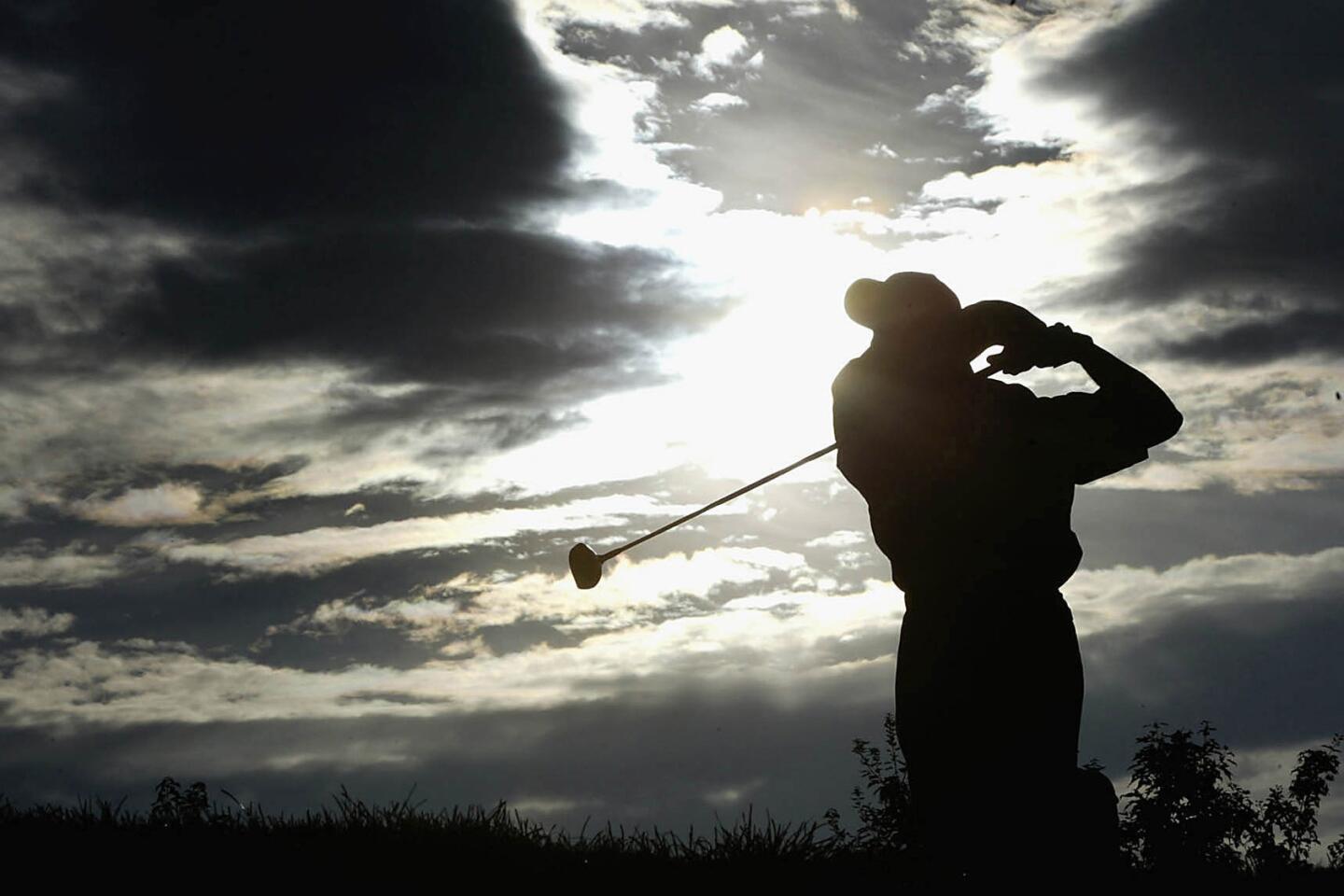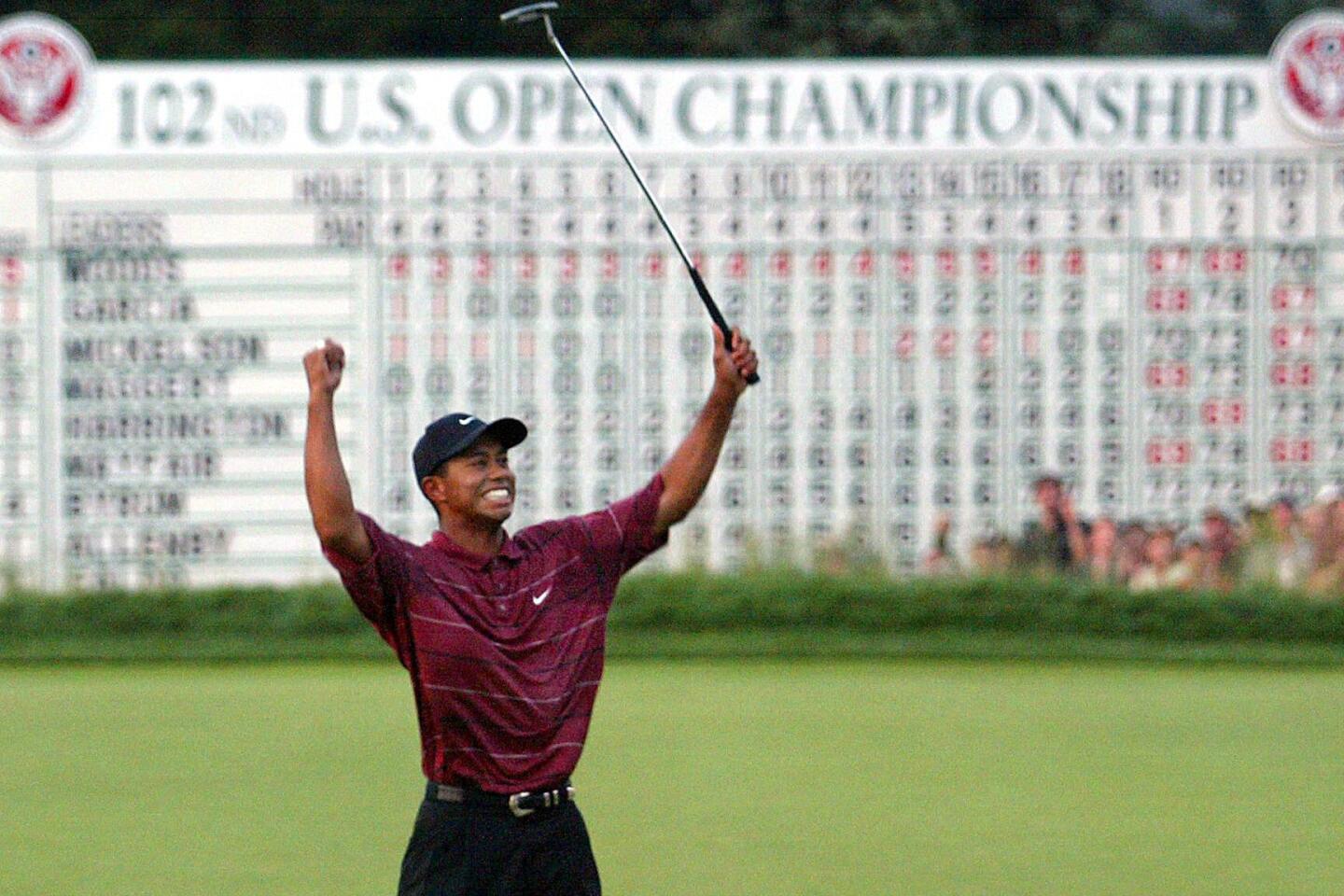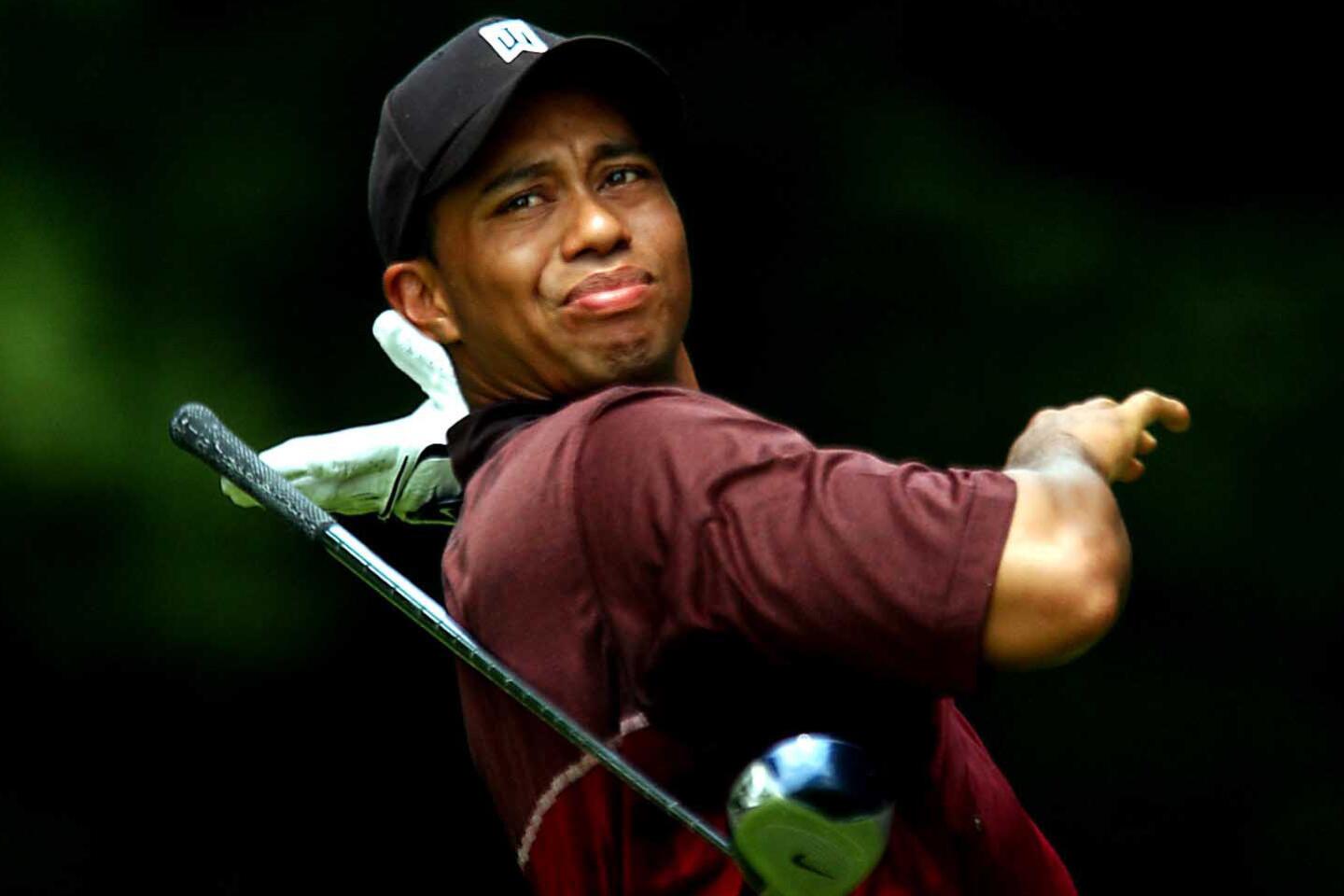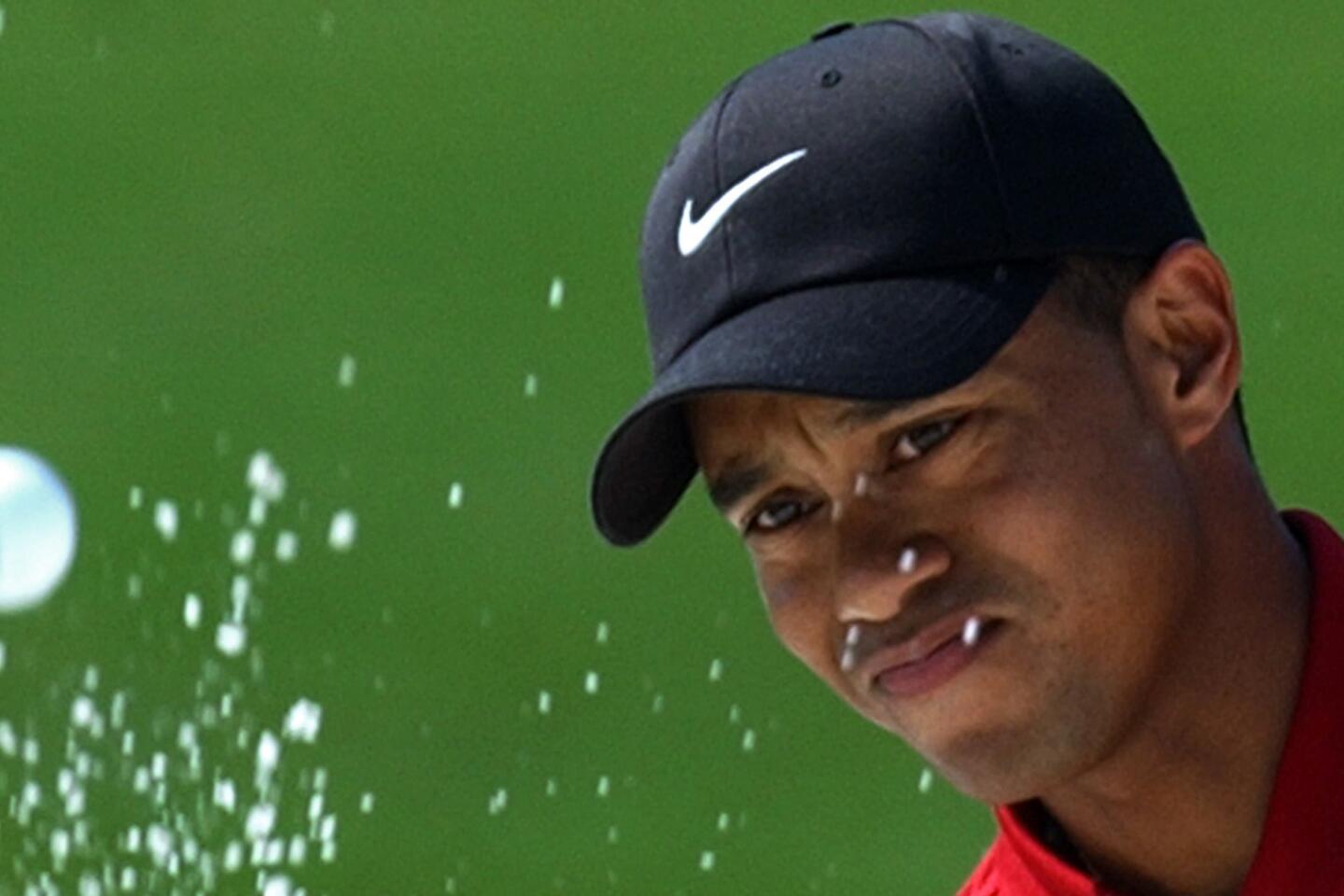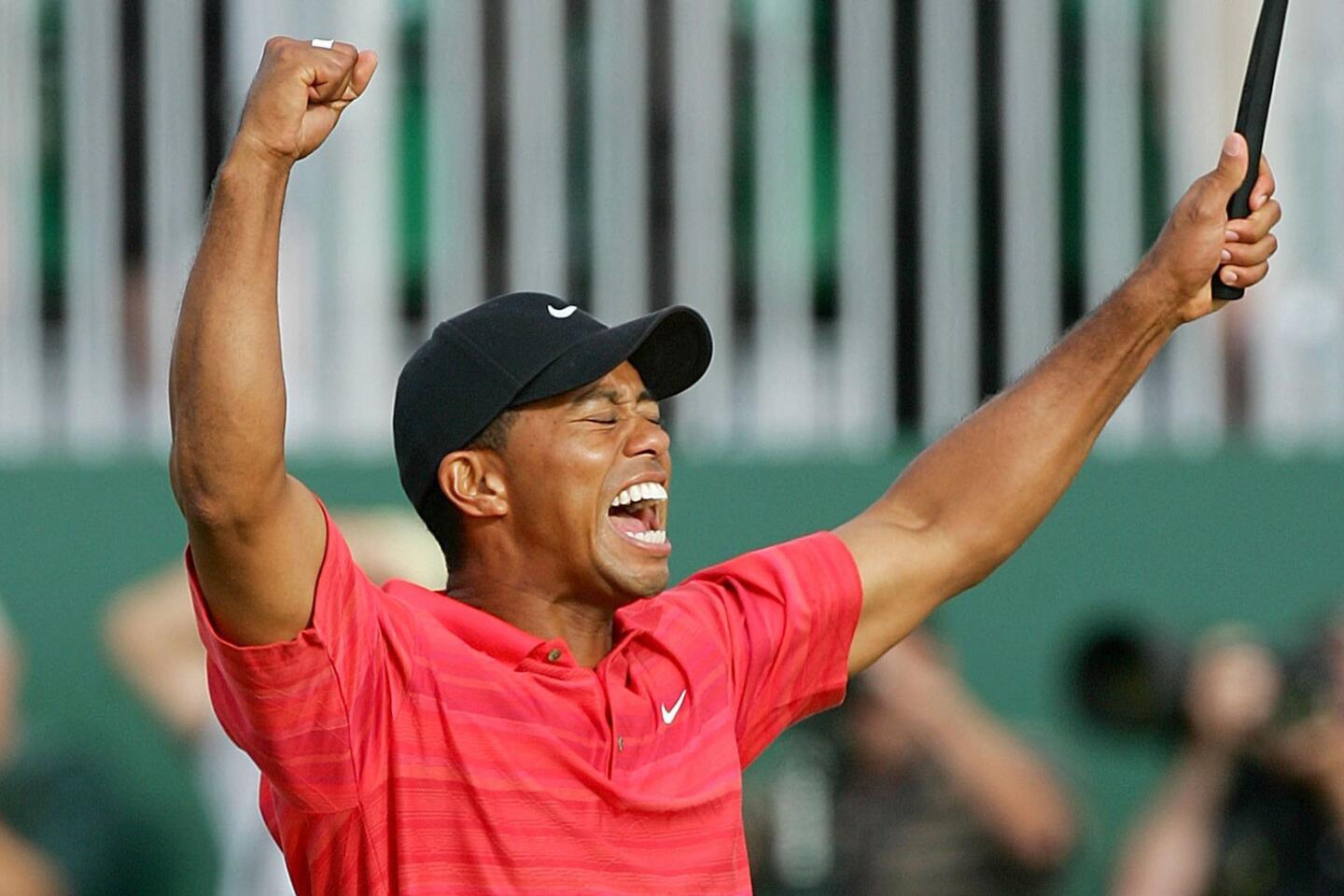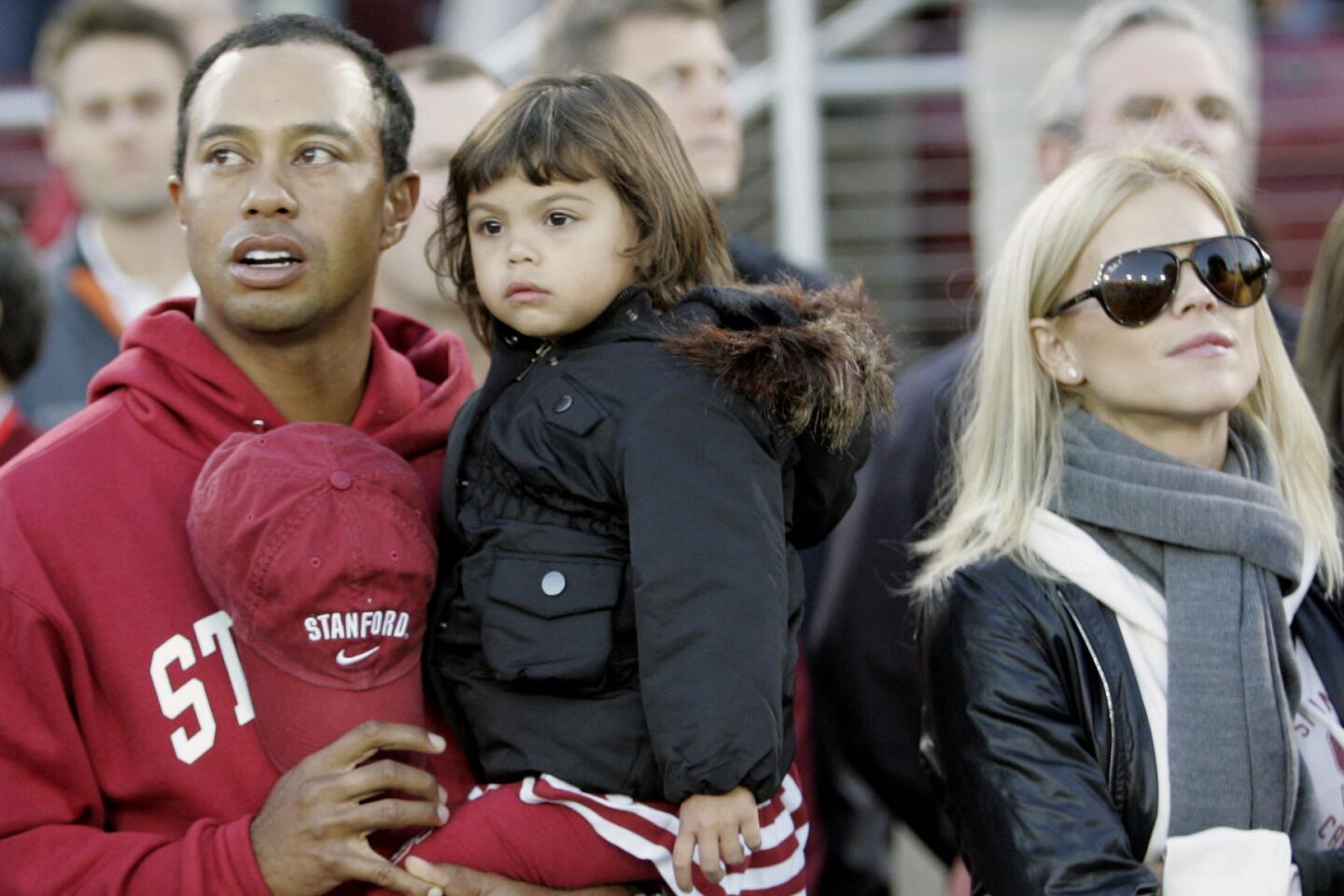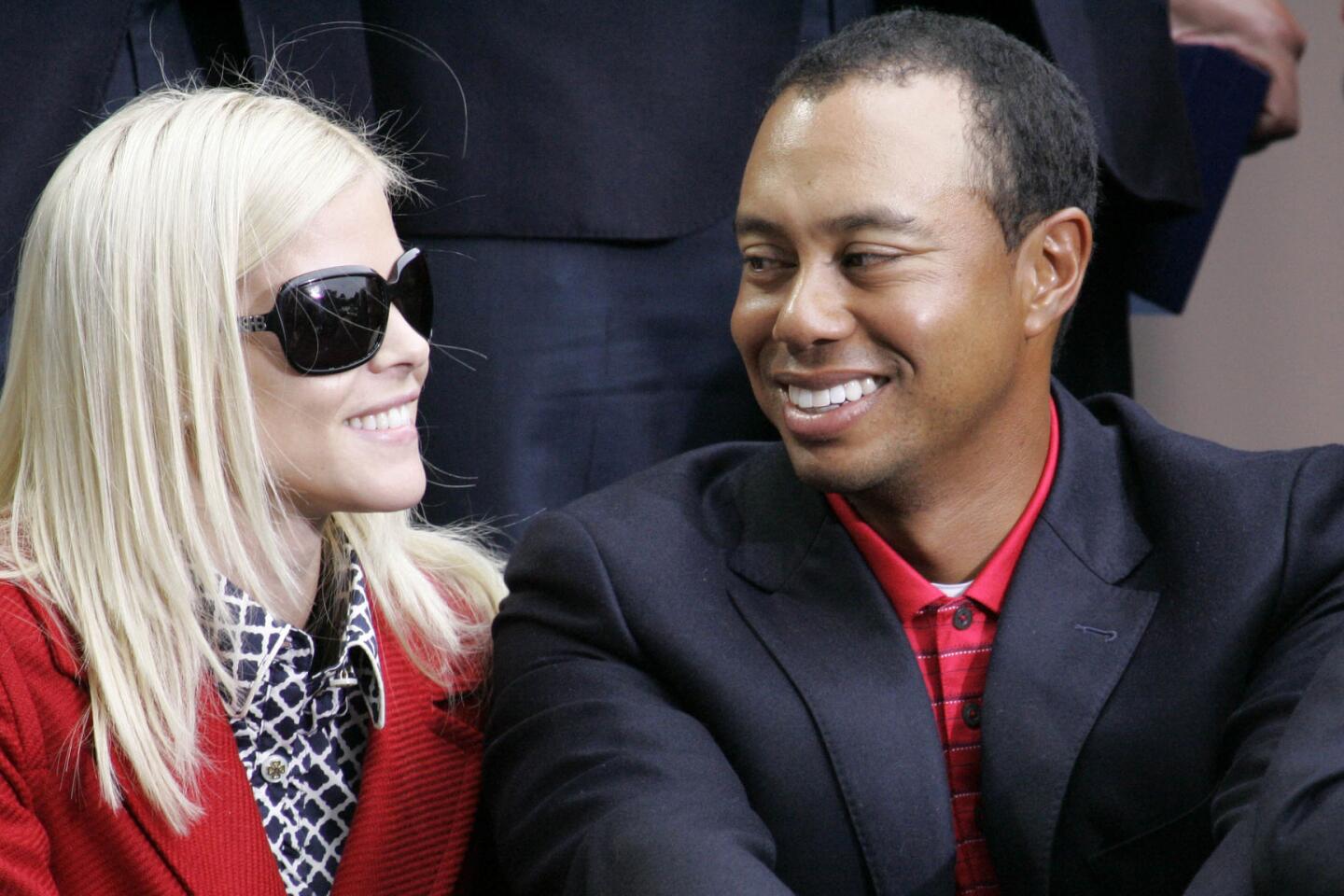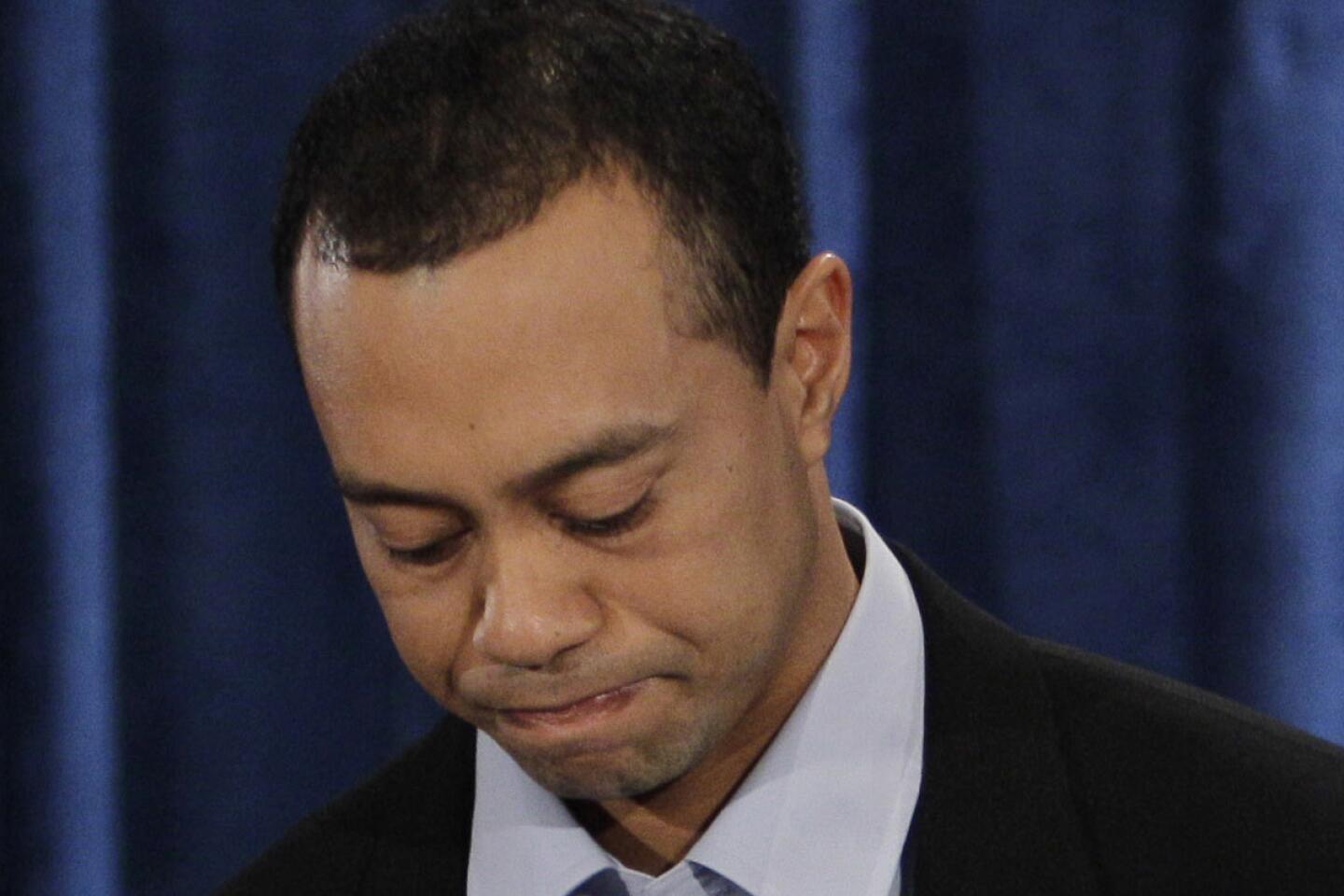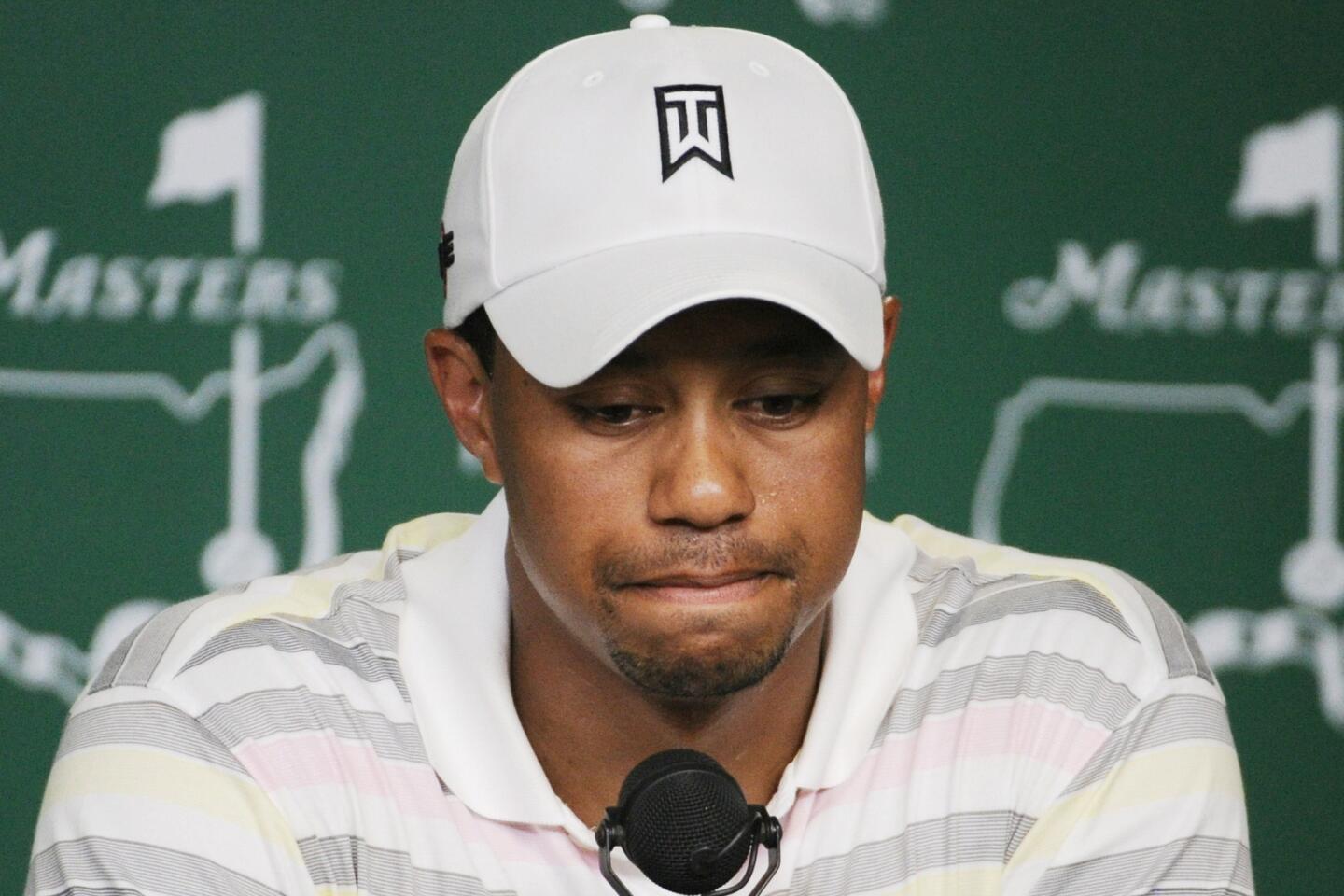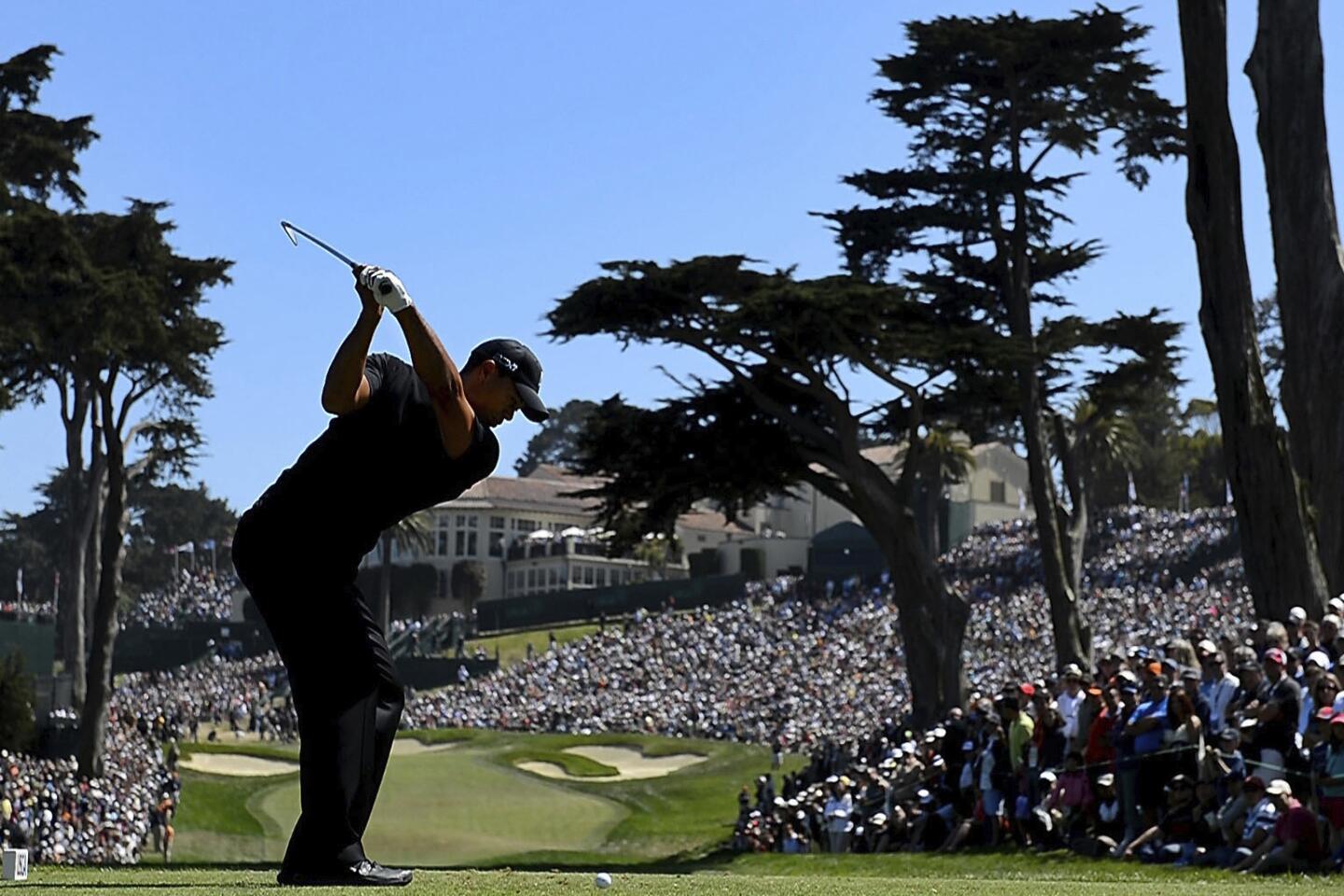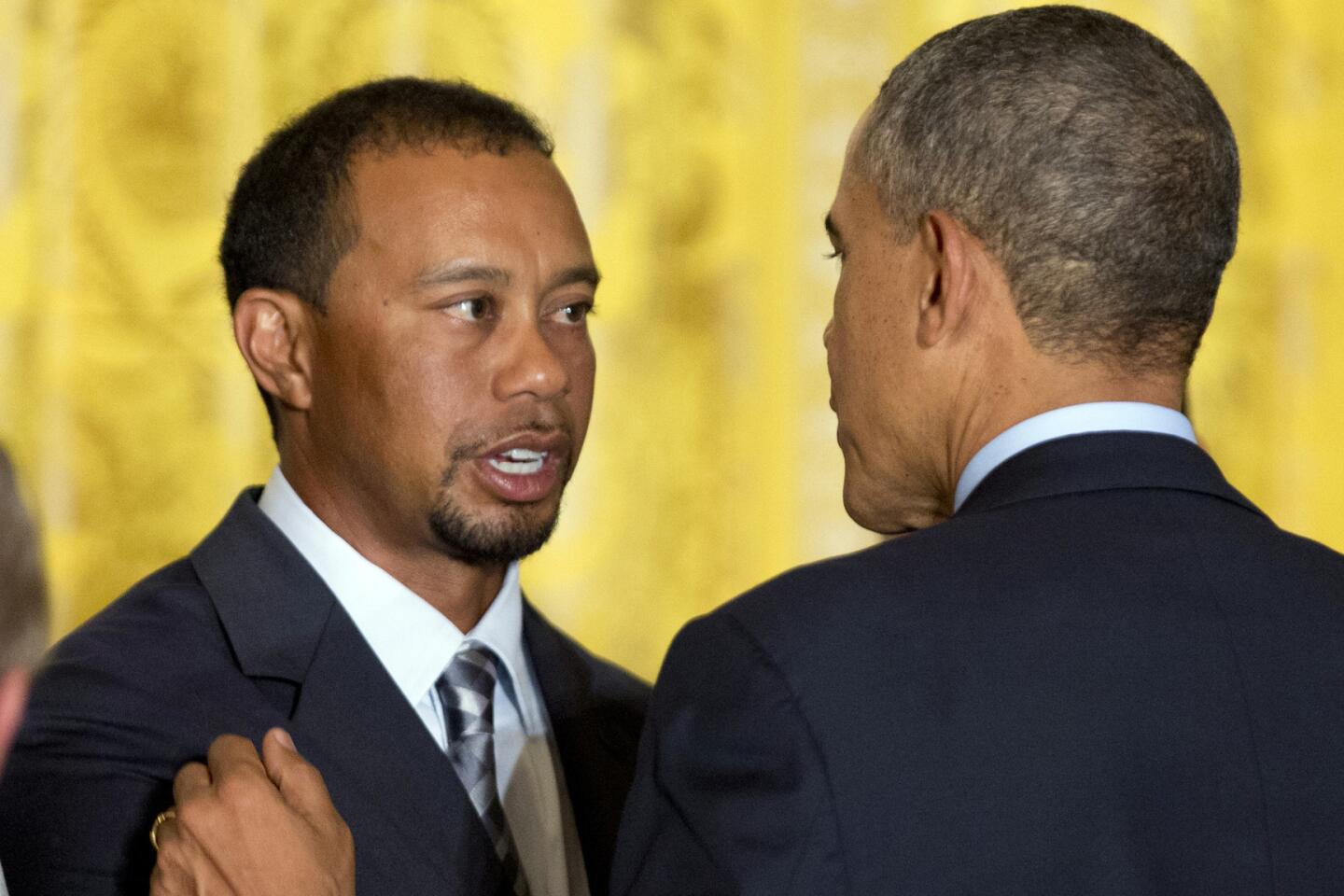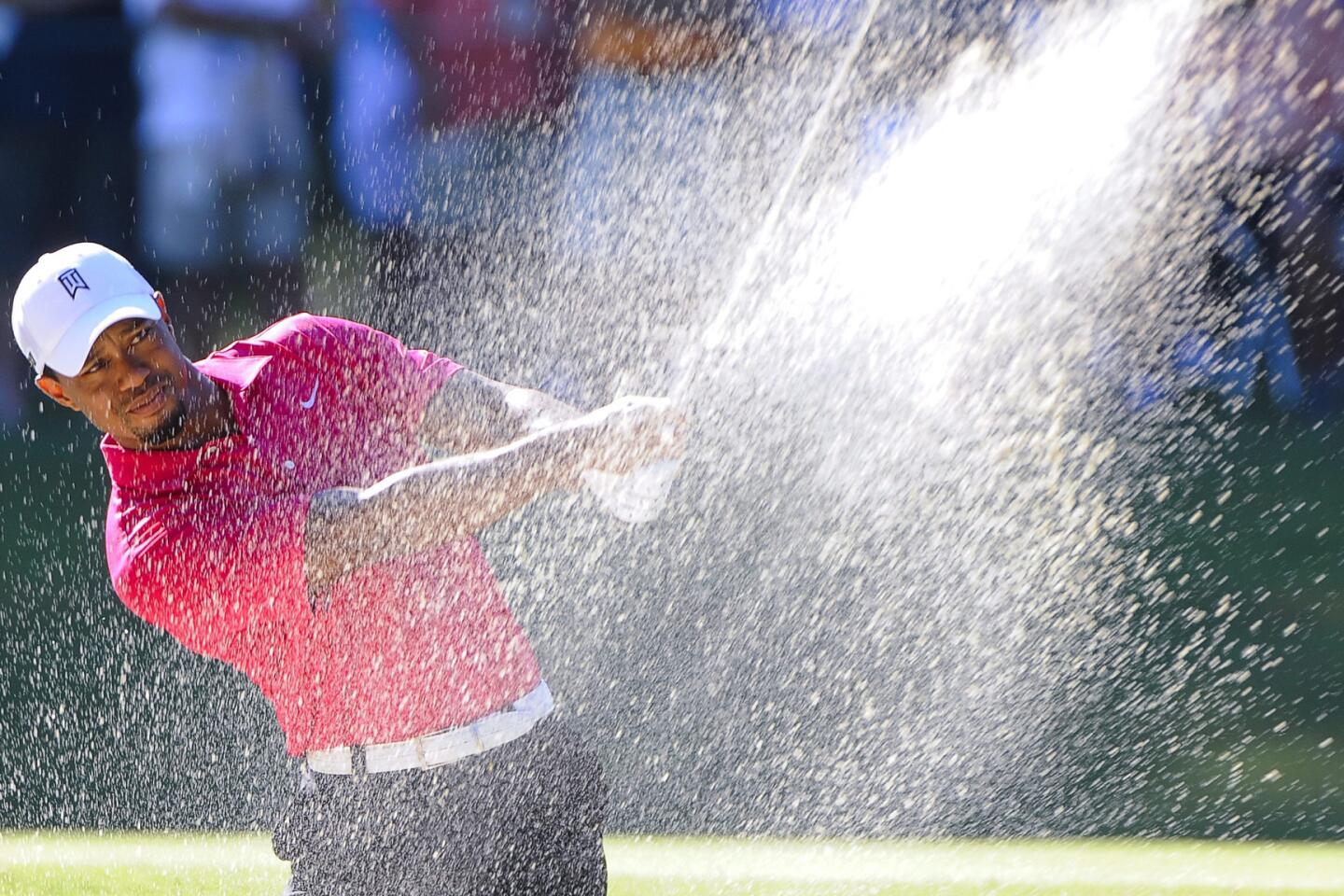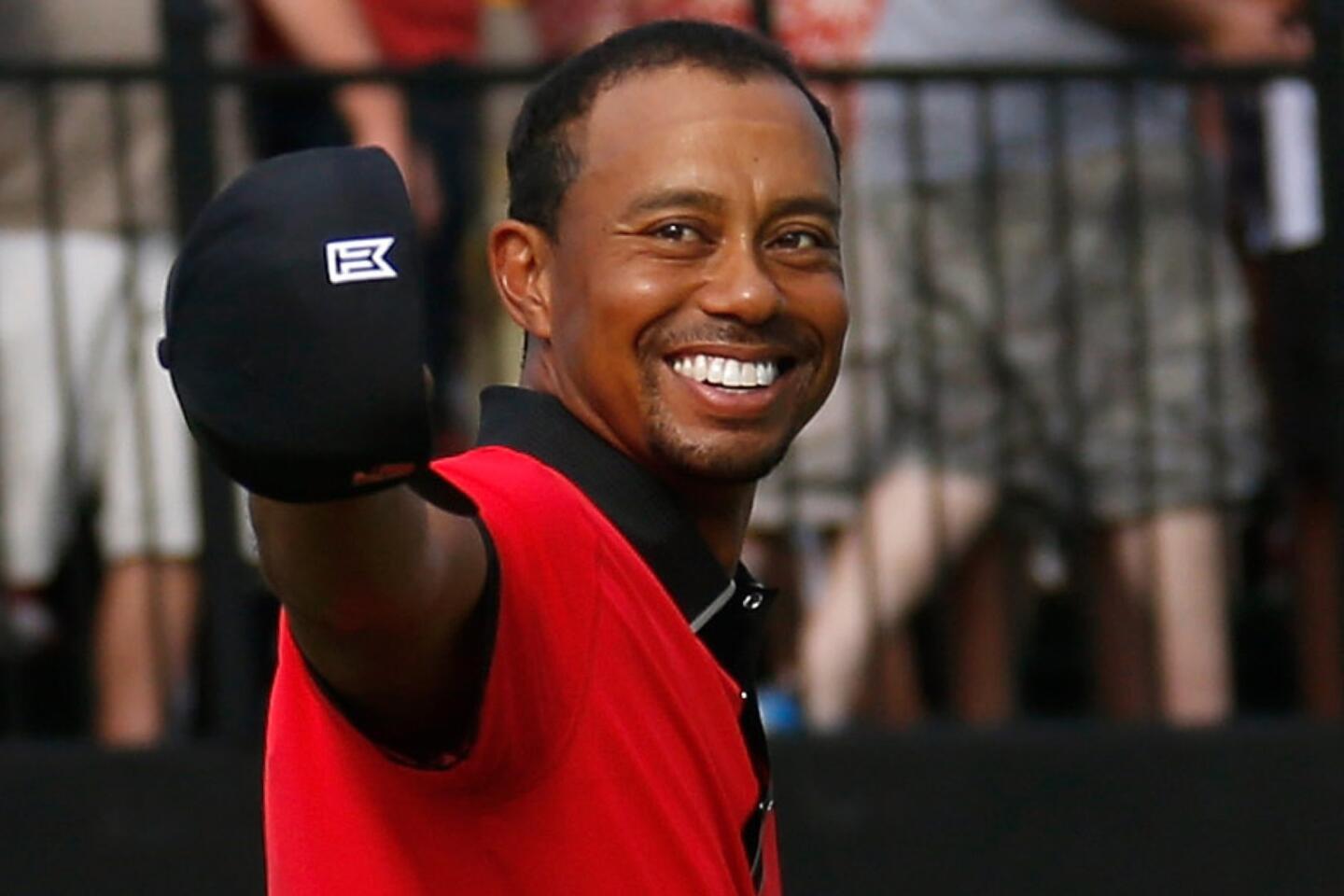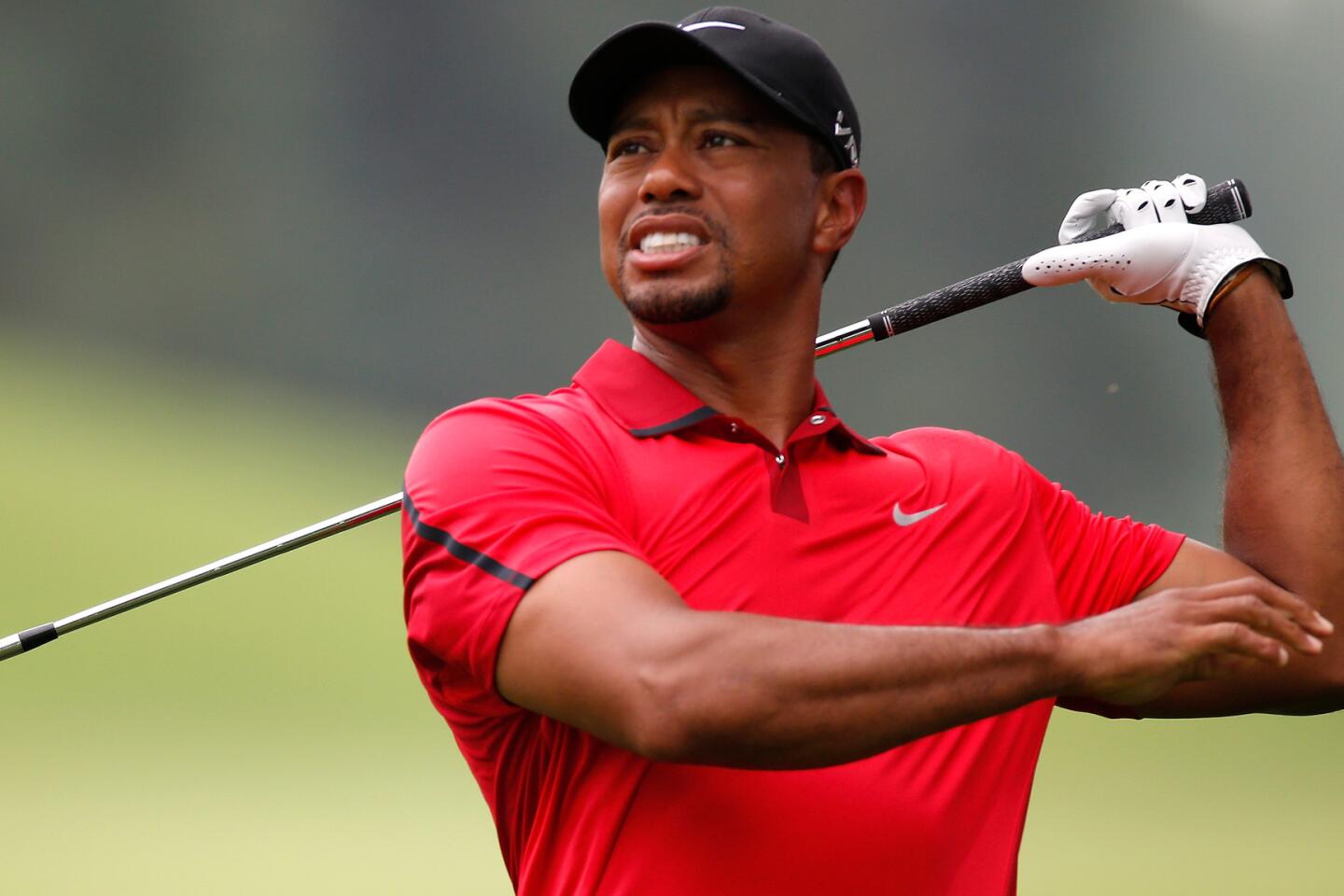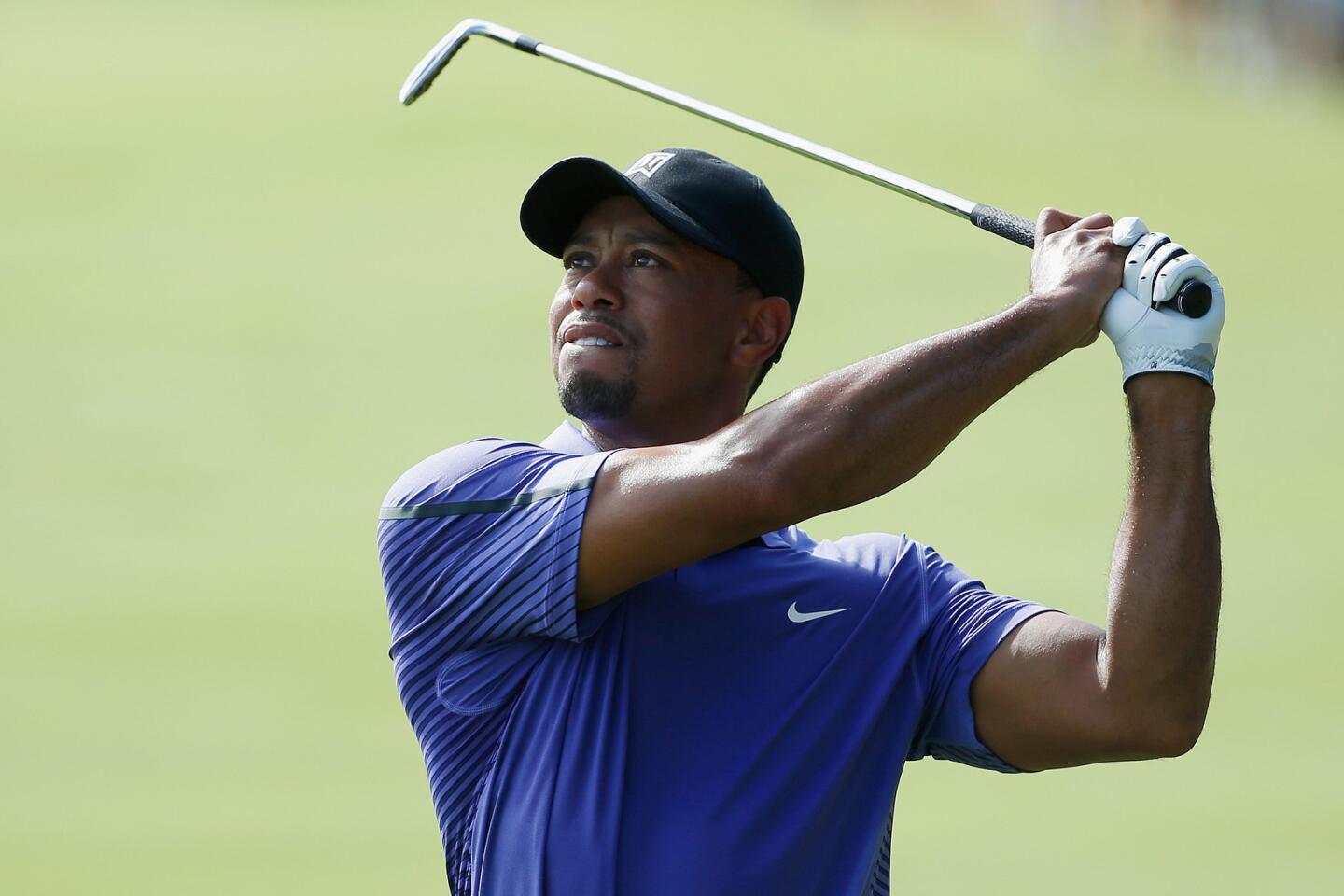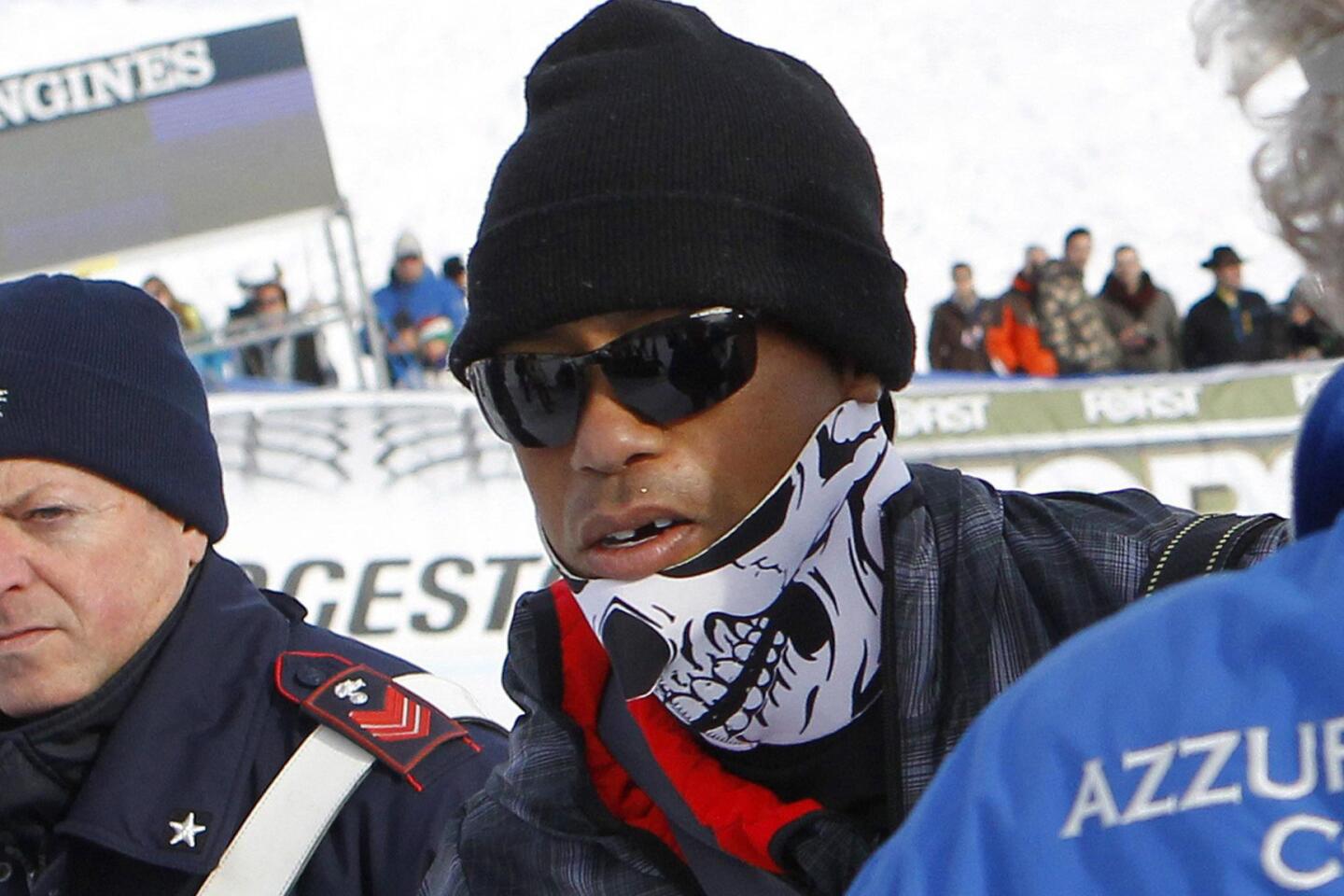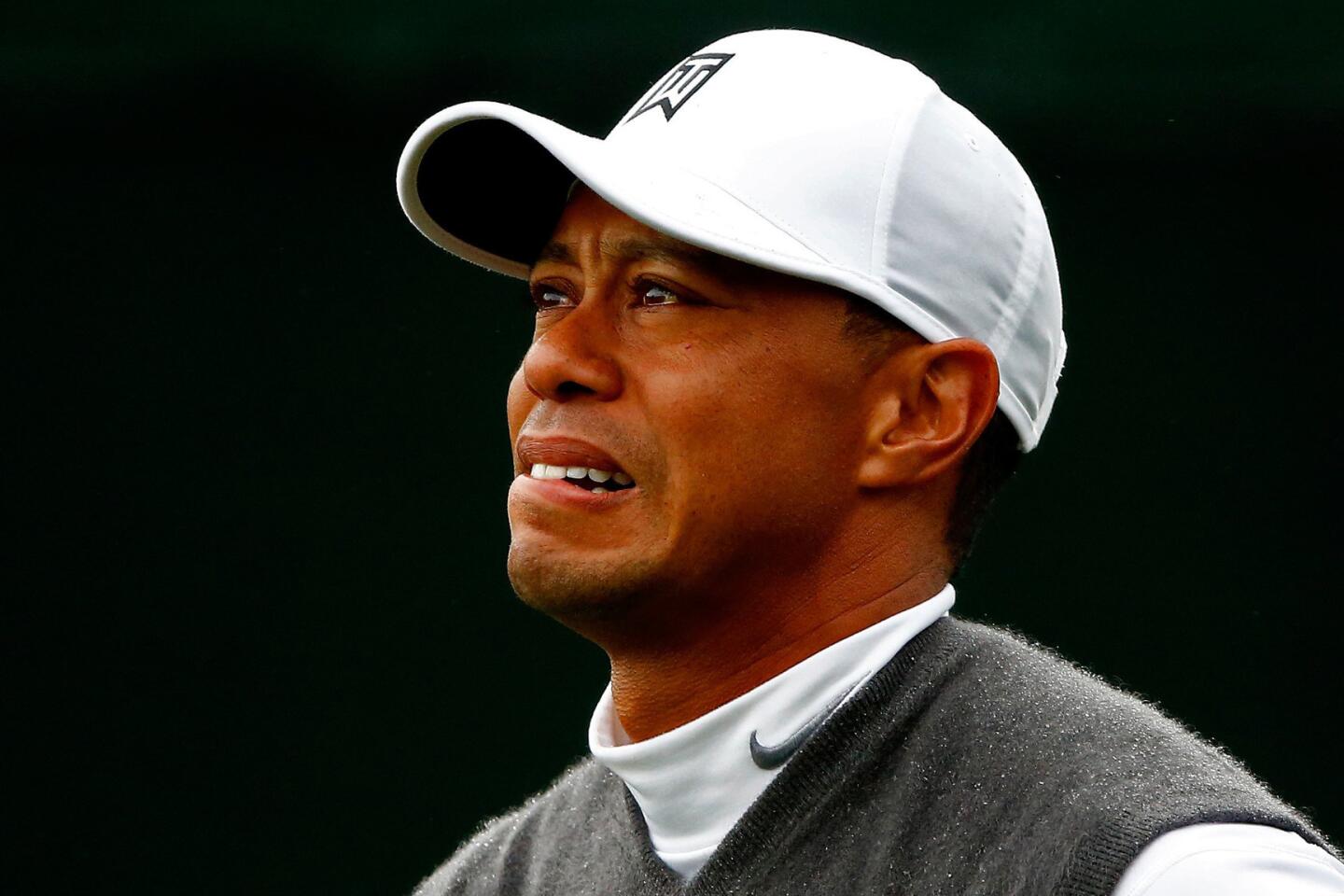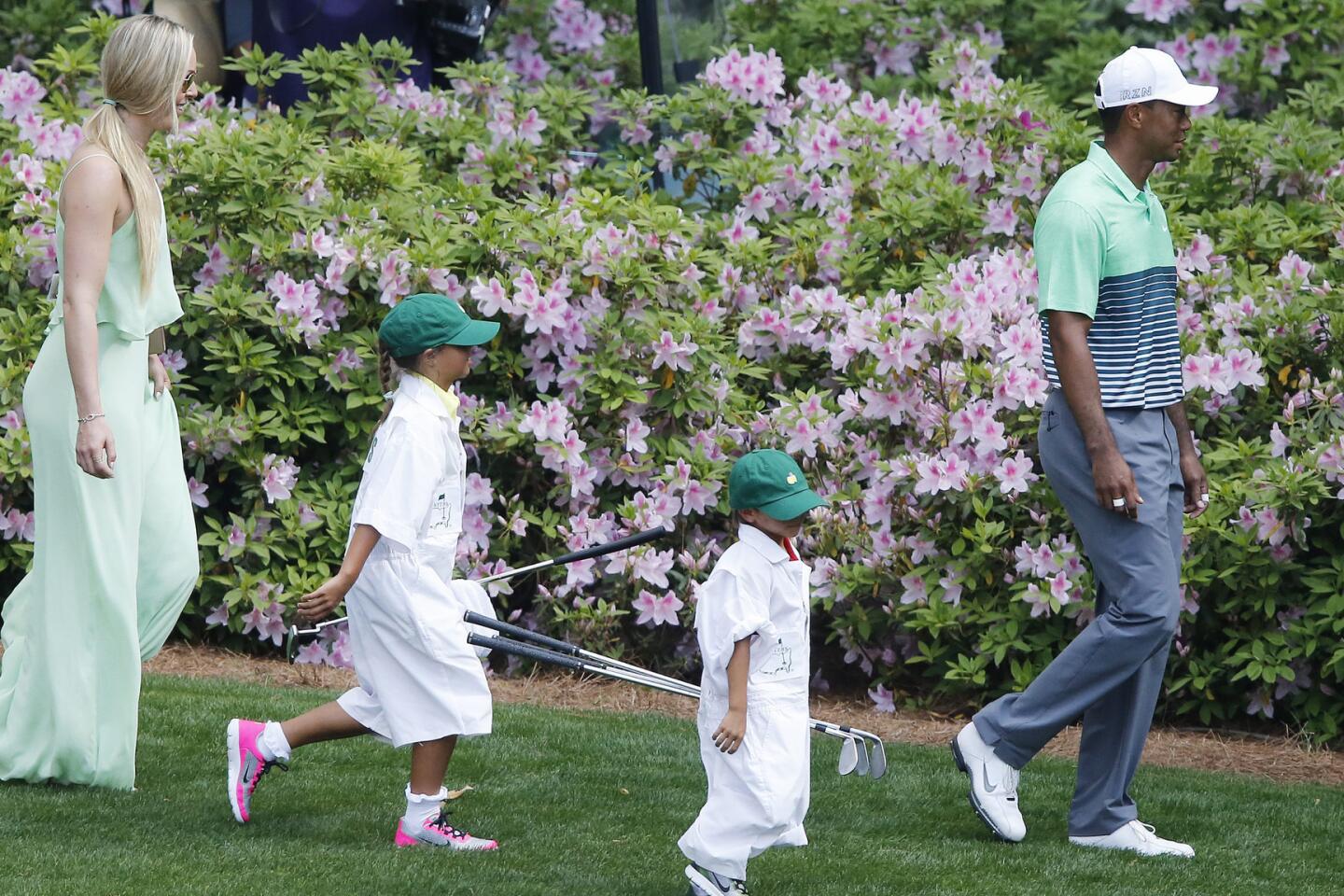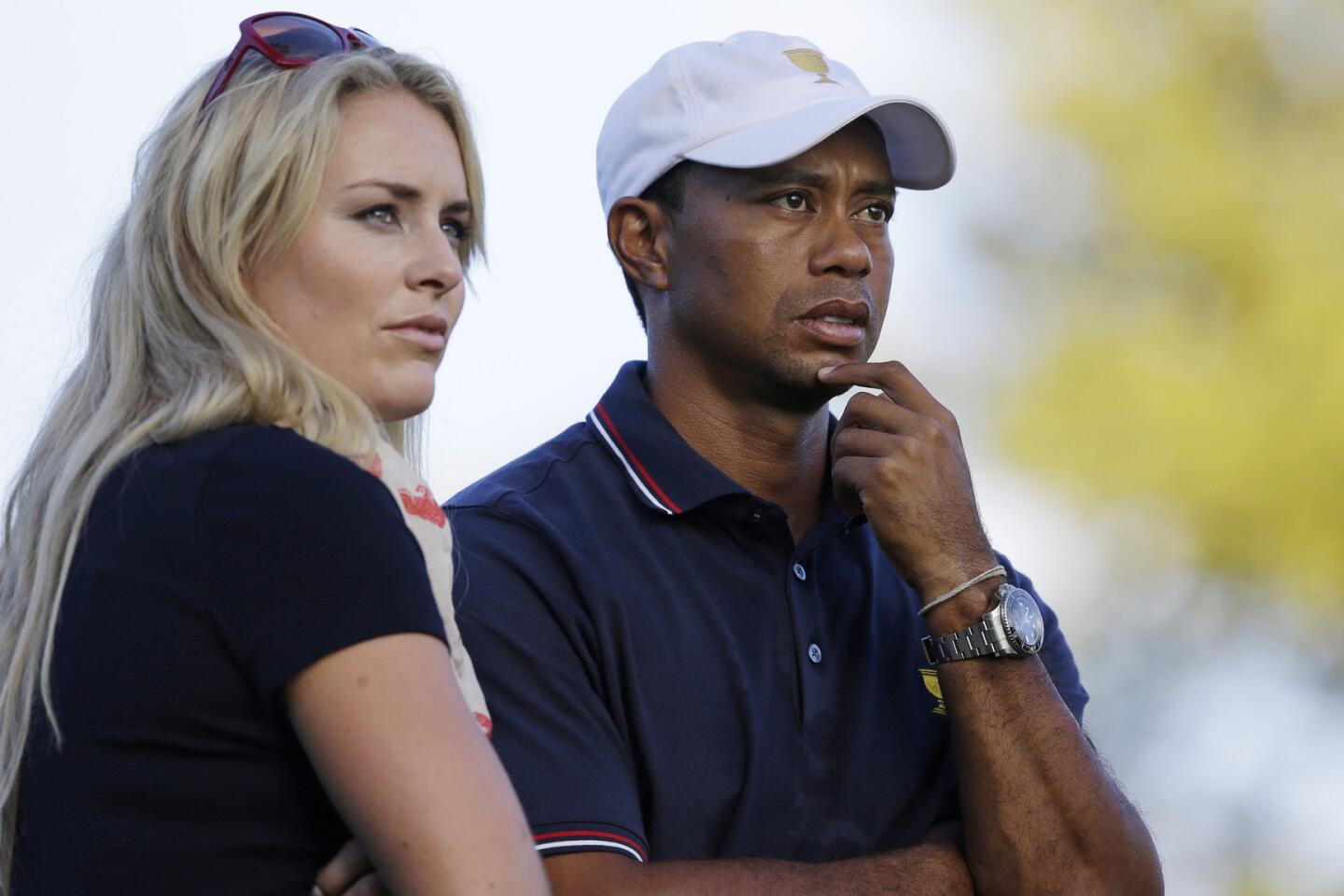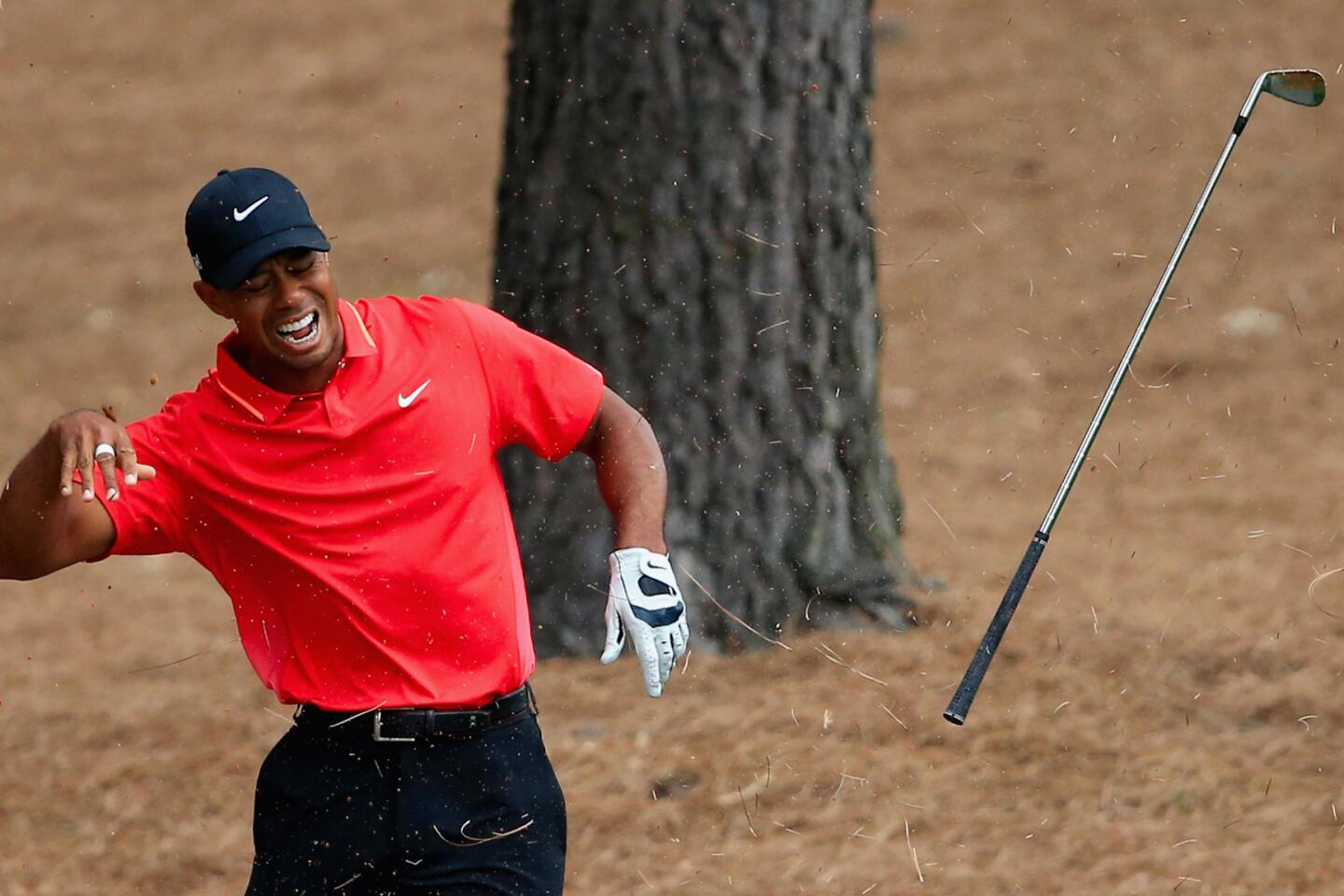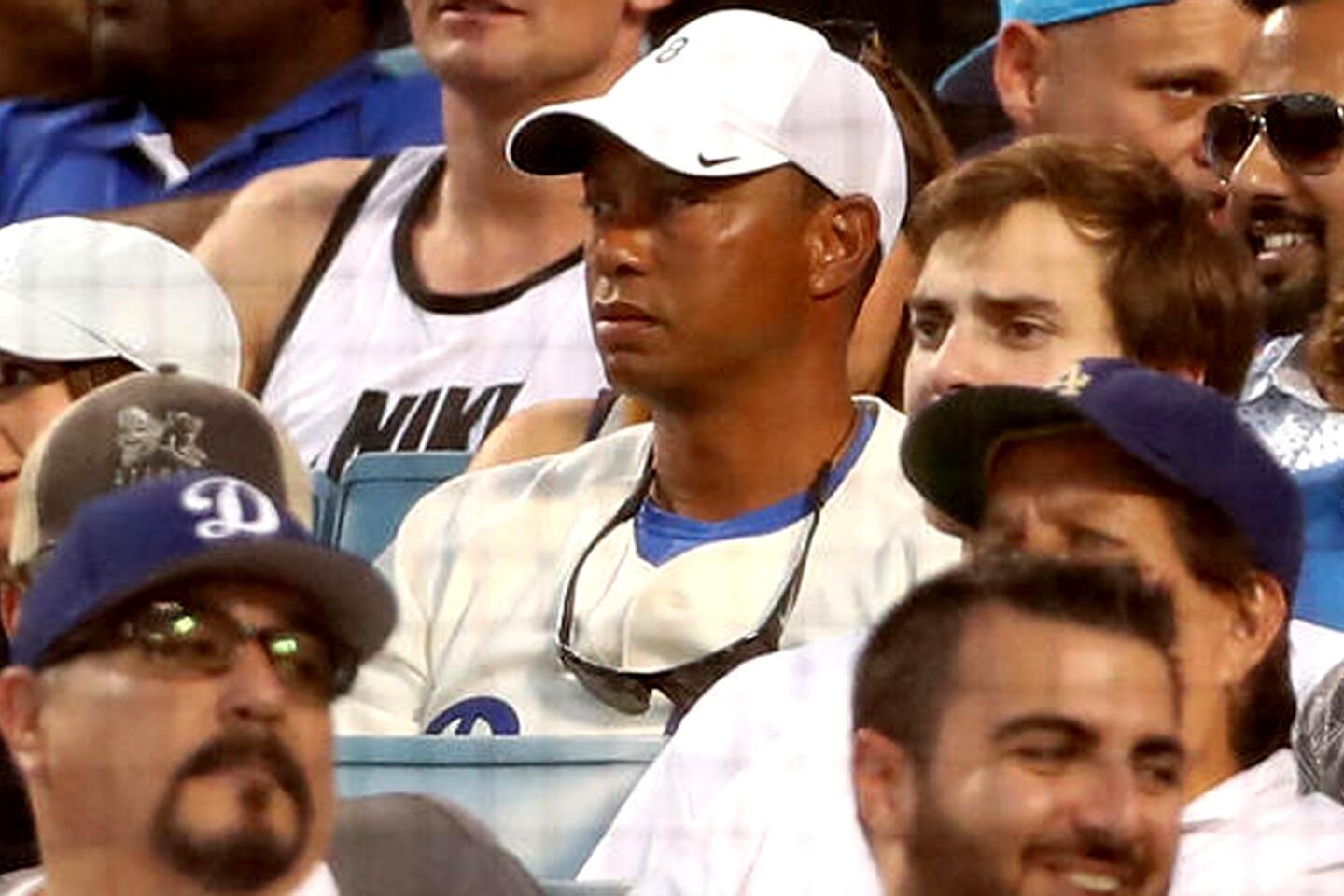Tiger Woods heads to Augusta, giving golf a Masters boost many did not see happening
- Share via
Ken Bentley doesn’t need to turn on the television or open a sports page to know the fervor for Tiger Woods is back as the Masters tournament approaches.
All he had to do was get a haircut.
For the record:
5:35 p.m. April 3, 2018An earlier version of this article misspelled the last name of Bridgestone CEO Angel Ilagan.
Bentley regularly settles into a chair at On The Top, a barbershop in the Baldwin Hills neighborhood of Los Angeles, and listens to the mostly African American clientele talk sports nearly every minute of the day.
In the last couple of years, Bentley observed that as Woods disappeared from the PGA Tour while he recuperated from back surgeries, so did golf from the shop’s TV.
Bentley, 66, is an L.A. native, golf fanatic and CEO of the Advocates Pro Tour, which gives budding minority golfers a chance to compete at the professional level. He also sits on the Tiger Woods Foundation board.
He’ll watch golf anytime, but he’s different from a lot of his buddies.
“If you’re a hard-core golfer, you appreciate Rory [McIlroy] and Jason [Day],” Bentley said. “But to the average sports fan, they couldn’t care less about those guys. They’re just ho-hum about golf.
“Now, the guys in the barbershop are all asking, ‘How do you think Tiger is going to do?’ They’re replaying the shots he hit in the tournament before. You didn’t see that excitement when Tiger was out.
“If you ask me, golf needed that jolt of excitement.”
Ask anybody. TV executives. Tournament directors. Equipment manufacturers. Golf course owners. Youth organizers.
Twenty-one years after Woods shook the game’s landscape with his first record-breaking, barrier-shattering victory in the Masters, and nearly five seasons removed from his last PGA Tour victory, his extraordinary comeback from four back surgeries is giving golf a boost many never saw coming.
“He is once again transcending the sport,” Steve Mona, CEO of the World Golf Foundation, said on the phone from his headquarters in St. Augustine, Fla.
“To come back as he has, and just jump right into the fray … in my heart of hearts, I wondered if it was really going to happen.”
Heading into his first competition at Augusta National Golf Club since 2015, Woods is coming off two contending finishes on the tour’s Florida Swing — a tie for second at the Valspar Championship and a tie for fifth at the Arnold Palmer Invitational.
The television ratings and attendance for those tournaments were the best they’d been in years, and Woods’ sharpening of his game is making this Masters one of the most anticipated ever.
Though Woods hasn’t pulled on a Masters green jacket since 2005 (his fourth win at Augusta), and hasn’t captured a major since the 2008 U.S. Open at Torrey Pines, Las Vegas oddsmakers have tabbed him the 9-1 favorite to beat the likes of Day, McIlroy, Dustin Johnson, Bubba Watson and Phil Mickelson.
“If he was to win it, you’re talking about one of the epic moments in the history of the sport,” CBS Sports anchor Jim Nantz said this week.
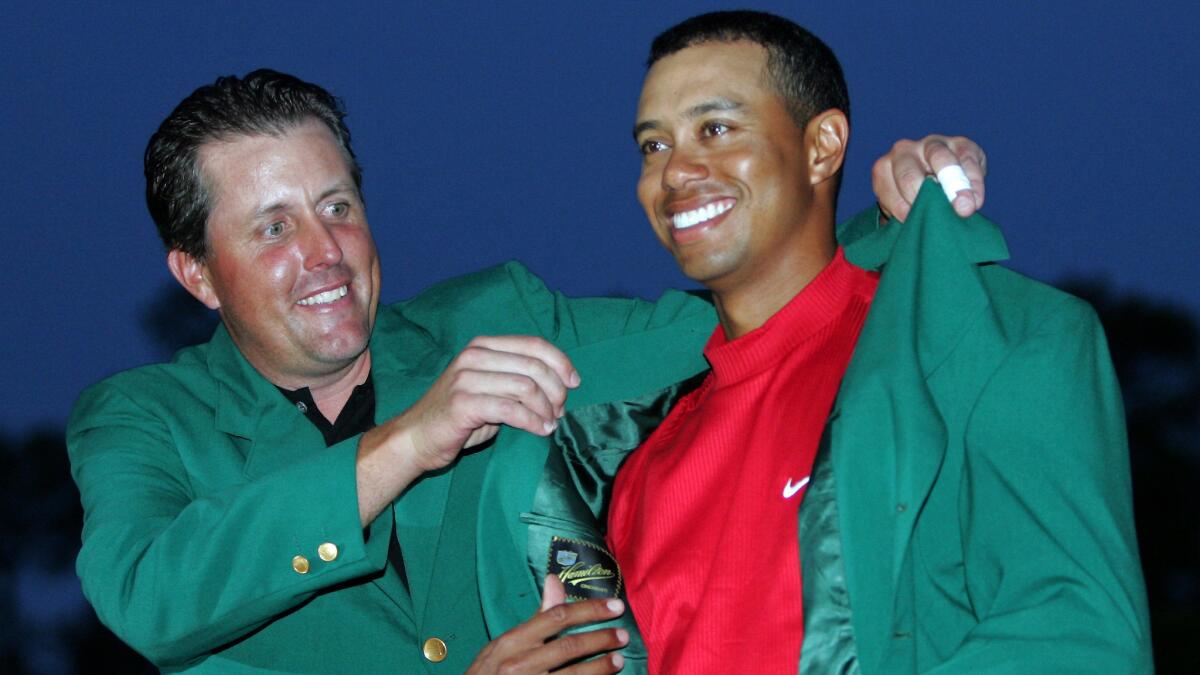
“To have him back in Butler Cabin,” Nantz added of the green jacket ceremony, “it would truly be one of the all-time scripts. And this is an event that has an amazing ability to produce Hollywood-quality stories.”
The second coming of Tiger Mania is real, with plenty of numbers and anecdotes to back it up.
In the back-to-back weeks Woods contended in Florida, the two final-round telecasts were off the charts. The Valspar numbers were the best for a non-major since Woods’ 2013 victory in the Players Championship, and the ratings for the Arnold Palmer Invitational were 136% better than last year.
At the Genesis Open at Riviera Country Club, Woods didn’t make the cut, but his presence was felt long before the first tee shot. Tournament Director Mike Antolini reported advance ticket sales were up 40% to 50%, and clubhouse package purchases rose 60% to 70%.
Woods, out of the hunt, teed off on the back nine Sunday in the Farmers Insurance Open at Torrey Pines, and still the ratings were 38% higher than in 2017.
Nantz, who anchored in San Diego, pointed out the viewership stayed high to the end of the broadcast of a playoff that was extended to Monday by darkness, with Day eventually beating Alex Noren.
“To me, this is what he brings to the game,” Nantz said. “He brought people to the set, and a whole new audience. They got interested in the competition and stayed with it.”
Beyond television, there is the business of golf, and no player affects consumer behavior more than Woods.
In 2016, when Nike stopped branding golf balls, Woods switched to Bridgestone. Angel Ilagan, the company’s CEO and president, said sales increased with Woods not even playing last year, but the impact was nothing like he’s seen in the last month.
Ilagan said purchases of the specific ball Woods is using — the Bridgestone Tour B XS — have shot up 265%, and that’s before the special edition with a Woods logo went on sale this week in California.
Ilagan said the Woods ball previously accounted for 15% of Bridgestone sales; now it’s at least 40%.
With Nike out of the picture other than its clothing line, Bridgestone is the only company that produces a ball that has a logo — a fat “B” — that can be recognized on TV. And since virtually every shot by Woods is shown, that’s some fantastic product placement.
“He was worth more than the endorsement [money] last year,” Ilagan said. “Now it’s ridiculous.
“I think he’s just as popular today as he ever was. Maybe more so. It’s nicer to root for the guy who is making a comeback versus the guy who is demolishing everybody.”
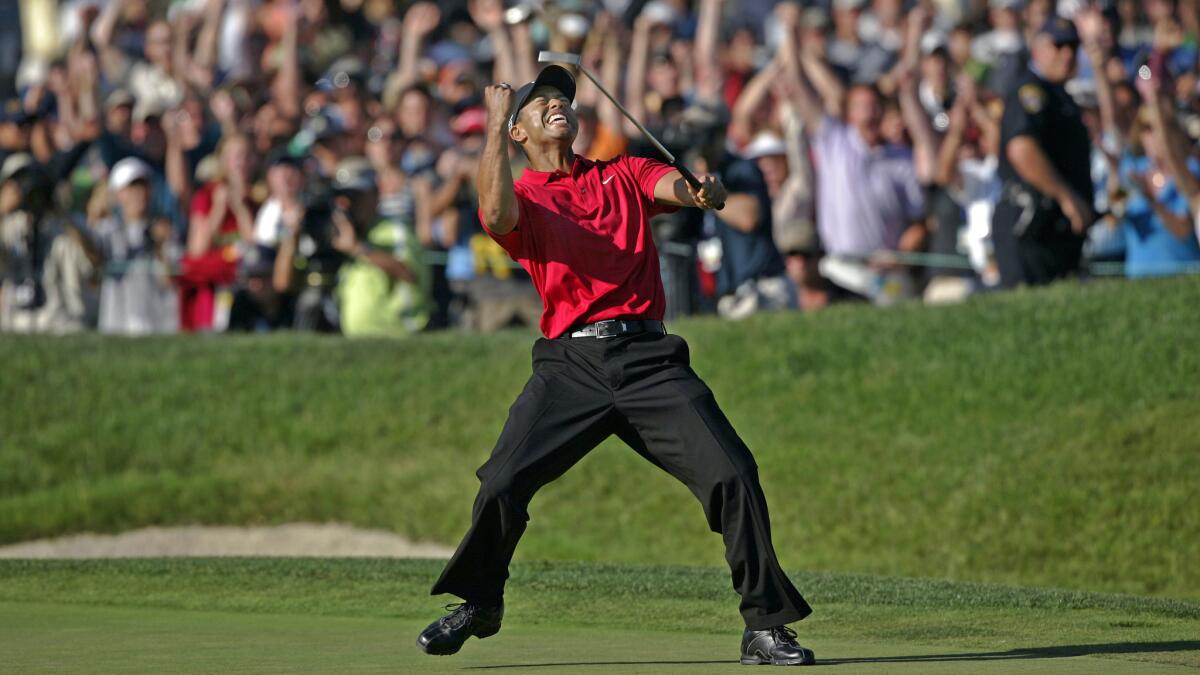
Therein lies an interesting and ongoing social experiment with Woods.
A few weeks ago, Nantz compared Woods’ comeback, at the age of 42, to that of Tom Brady or Michael Jordan taking five years off and returning to a competitive level. Yet neither of those men would have had to climb back from the physical and emotional scars Woods carries.
Beyond his body and game falling apart — it doesn’t get more embarrassing than the chipping yips he suffered in early 2015 — Woods dealt with the shame of his extramarital affairs being exposed in 2009 and his DUI arrest in May 2017, for which he eventually pleaded guilty to reckless driving.
Woods — bags bulging under his eyes, his thinning hair disheveled — was a shockingly forlorn figure in his arrest mug shot.
All those troubles, though, may be contributing to the excitement with which fans have come back to watch him play. He has been a fascinating study in an idol’s precipitous fall, only to find, in the hearts of some, forgiveness and redemption, without yet notching a single victory.
“I knew Tiger Mania when I was 8 years old,” said Megan Mahoney, executive director of the San Diego County Junior Golf Assn. and IMG Academy Junior World Championships.
Mahoney is six months older than Woods and competed at the same courses he did throughout their Junior World careers in San Diego.
“I root for the guy,” she said. “I certainly am not impressed with some of the things he’s done in the past, but I think I represent a fairly common side of the population. We’re a forgiving society. Time moves people on.
“If I see him on the range, I’m not thinking about what he did on a day in November,” she added of Woods’ infamous ramming of a fire hydrant in 2009. “I’m more inclined to look at his swing structure. Are we going to see it hold up for another few years?”
Bentley, a former executive at Nestle who through the years has played three times with Woods in the Farmers Open pro-am, said he believes we’re watching a man with a different vision of his life.
“He really seems to be enjoying himself,” Bentley said. “It’s nice to see the smiles, and to see him interact with the crowd and the other players.
“Here’s a guy who has won 14 majors and is arguably the second-best golfer in history. And despite all of these back surgeries, he wanted to come back. That’s a testament to how much he loves the game, and that’s coming across now.”
What this second coming of Woods’ popularity means to golf long term is the subject of much debate.
It is well documented in studies by the National Golf Foundation that recreational participation peaked in 2000 — perhaps Woods’ greatest season. In a go-go economy, there were 518 million rounds played in the U.S. that year. In 2017, there were 71 million fewer than that.
According to the NGF, there were 284 golf course openings in America in 2001. Last year, there were 25.
Mona said of Woods’ first emergence, “He turbocharged golf. I shudder to think about if Tiger didn’t come along.”
But he adds this cold reality: “Tiger’s place in the game does not translate into a one-to-one basis for participation in the game. Tiger creates interest, and it’s up to us as an industry to convert that.”
More than two decades after Woods’ emergence, Mona said he believes golf is far more equipped to meet a new demand with greater options.
He cites programs such as the First Tee, the inner-city initiative that was in its infancy in the early 2000s, and “Get Golf Ready” — instruction for beginners that Mona said introduces 100,000 new players to the game each year.
Virtually all of golf’s leading organizations, Mona said, are committing resources to focus on women, children and minorities.
“Without fear of contradiction, I can say golf’s understanding about the importance of diversity and inclusion has never been higher,” Mona said.
“I would be the first to admit that we’re not there yet, in terms of what golf looks like to the public. But trust me, there’s a tremendous amount of effort in those areas.”
Some of the numbers are encouraging. According to NGF’s 2016 study of participation, 33% of golfers ages 6 to 17 were females — up from 17% in 1995. Among junior golfers, 27% were non-Caucasian. That number was 6% in 1995.

Glaringly absent still from the top levels of professional golf are African American competitors. Only a handful of black golfers have reached the PGA and LPGA tours in the last 20 years.
“It hasn’t happened as fast as all of us thought it would,” Bentley said of the influx of black players. “There are a lot of guys out there playing and trying. I think that story gets lost sometimes.”
He said he grew up playing tennis and that the racket sport has been more successful at nurturing potential stars.
In part, that’s why Bentley started the Advocates Tour in 2010, with the goal of giving minorities competitive outlets after high school or college.
“It’s almost like the foster care system,” Bentley said. “They’re just thrown out there.”
The Advocates Tour subsidizes entry fees, Bentley said, and even paid for one player’s asthma medication.
“Somebody needs to break through and say, ‘I want to be the champion for this,’ ” he said.
Until then, it seems golf will collectively cross its fingers, keep a close eye on Woods’ back, and hope he sticks around awhile.
The guys in the barbershop will be watching.
“When he wins one,” Bentley predicted, “he’s going to win a bunch.”
sports@latimes.com
More to Read
Go beyond the scoreboard
Get the latest on L.A.'s teams in the daily Sports Report newsletter.
You may occasionally receive promotional content from the Los Angeles Times.

